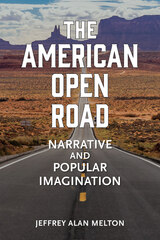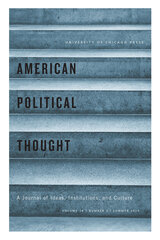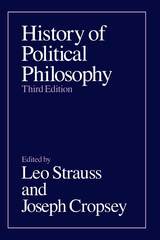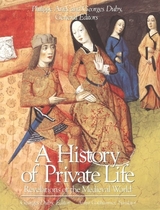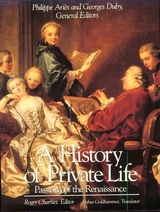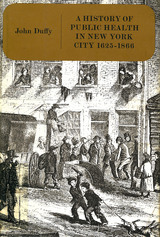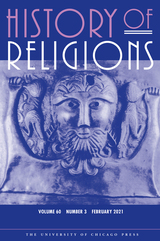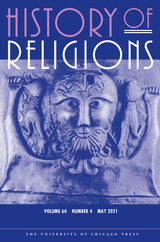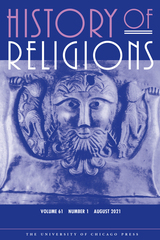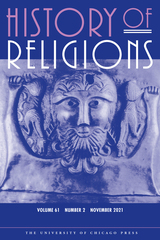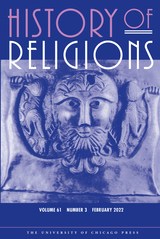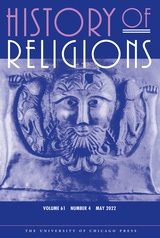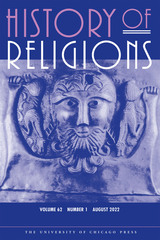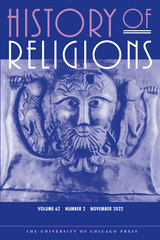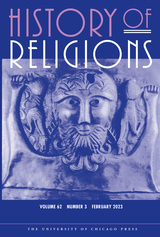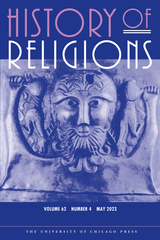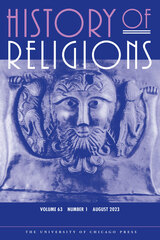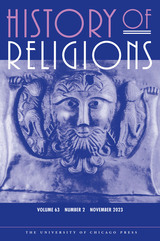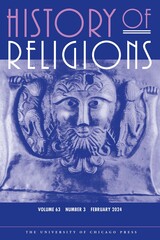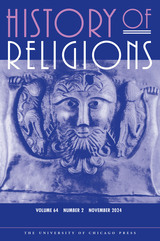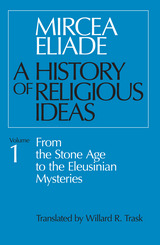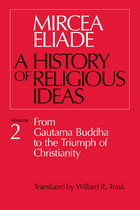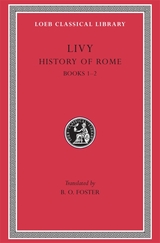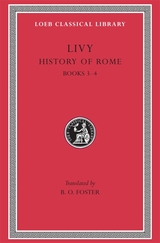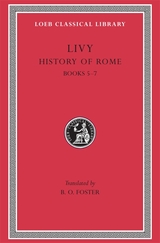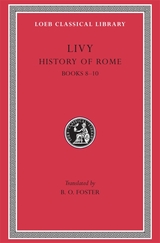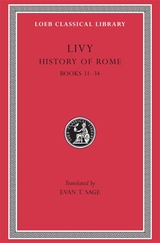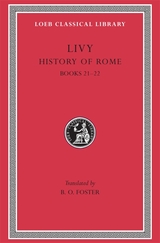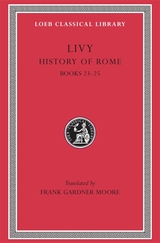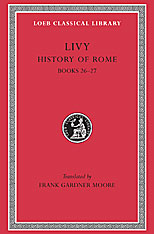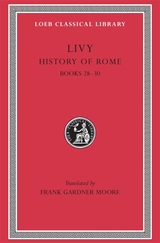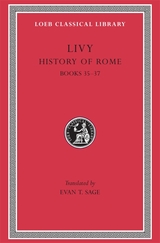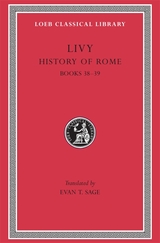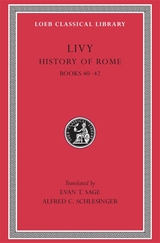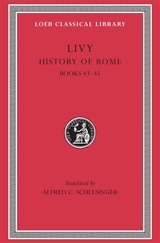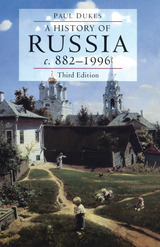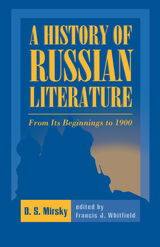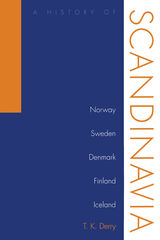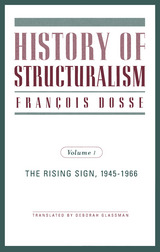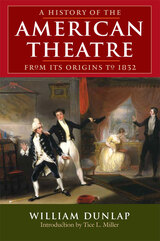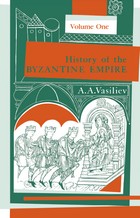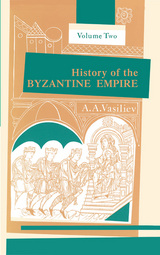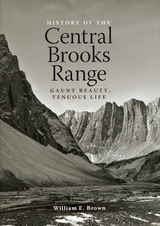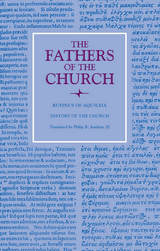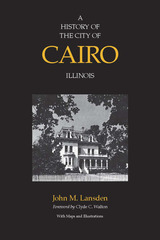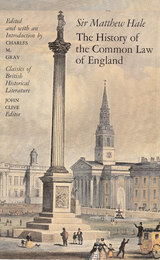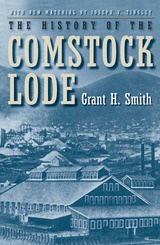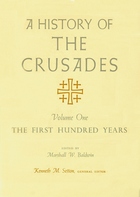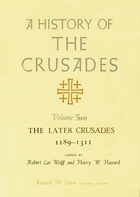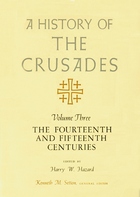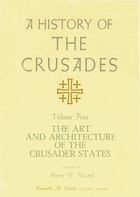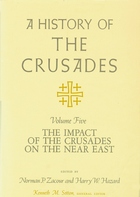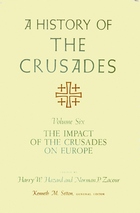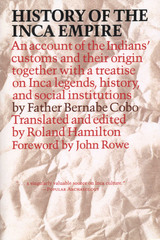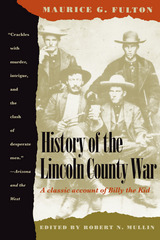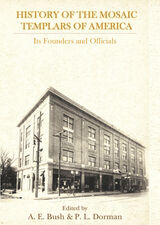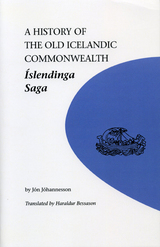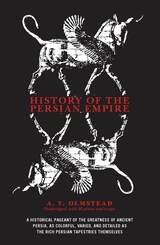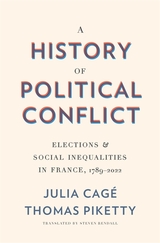 A History of Political Conflict: Elections and Social Inequalities in France, 1789–2022
Julia Cagé and Thomas Piketty
Harvard University Press, 2025 A pioneering history of voting and inequality, drawing on an unprecedented data set covering more than two centuries of sociological findings.
Who votes for whom and why? Julia Cagé and Thomas Piketty comb through more than two hundred years of data from some 36,000 French municipalities to show how inequality has shaped the formation of political coalitions, with stark consequences for economic and political development.
Cagé and Piketty argue that today’s tripartite division of French political life—a competition among a bourgeois central bloc and distinct factions of the urban and rural working classes—has a precise, and revealing, historical analogue. To understand contemporary tensions, we can look to the end of the nineteenth century and the beginning of the twentieth, another period when runaway economic inequality produced such a three-way rivalry. Cagé and Piketty show that tripartition has always been unstable, whereas the binary political conflict enabled by relative equality and typical of most of the twentieth century facilitated social and economic progress. Comparing these configurations over time helps us envisage possible trajectories for the French political system in the coming decades.
With its many changes in governmental structure since 1789, France is an ideal laboratory for studying the vicissitudes of modern political life in general, and electoral democracy in particular. Using France as a model, A History of Political Conflict offers a powerful framework for understanding the complex project of building and sustaining democratic majorities.
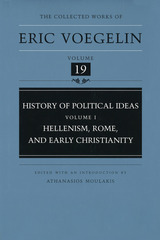 History of Political Ideas, Volume 1 (CW19): Hellenism, Rome, and Early Christianity
Eric Voegelin, Edited & Intro by Athanasios Moulakis
University of Missouri Press, 1997 Reaching from the decline of the Greek Polis to Saint Augustine, this first volume of Eric Voegelin's eagerly anticipated History of Political Ideas fills the gap left between volumes 3 and 4 of Order and History. The heart of the book is the powerful account of Apostolic Christianity's political implications and the work of the early church fathers. Voegelin's consideration of the political philosophy of Rome and his unique analysis of Greek and early Roman law are of particular interest. Although History of Political Ideas was begun as a textbook for Macmillan, Voegelin never intended it to be a conventional "synthesis." He sought instead an original comprehensive interpretation, founded on primary materials and taking into account the most advanced specialist scholarship—or science as he called it—available to him. Because of this, the book grew well beyond the confines of an easily marketable college survey and until now remained unpublished. In the process of writing it, Voegelin himself outgrew the conceptual frame of a "History of Political Ideas," turning to compose Order and History and the other works of his maturity. History of Political Ideas became the ordered collection of materials from which much of Voegelin's later theoretical elaboration grew, structured in a manner that reveals the conceptual intimations of his later thought. As such, it provides an unparalleled opportunity to observe the working methods and the intellectual evolution of one of our century's leading political thinkers. In its embracing scope, History of Political Ideas contains both analyses of themes Voegelin developed in his later works and discussions of authors and ideas to which he did not return or which he later approached from a different angle and with a different emphasis. In Hellenism, Rome, and Early Christianity, Voegelin demonstrates that the "spiritual disintegration" of the Hellenic world inaugurated a long process of transition in the self- understanding of Mediterranean and European man. The reflections that emerge remain universal concerns regarding the order of human existence in society and history. Although one may come to different conclusions, Voegelin's responses to the problems of the period suggest avenues of investigation that are still little traveled.
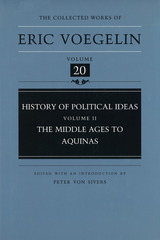 History of Political Ideas, Volume 2 (CW20): The Middle Ages to Aquinas
Eric Voegelin, Edited & Intro by Peter von Sivers
University of Missouri Press, 1997 Voegelin's magisterial account of medieval political thought opens with a survey of the structure of the period and continues with an analysis of the Germanic invasions, the fall of Rome, and the rise of empire and monastic Christianity. The political implications of Christianity and philosophy in the period are elaborated in chapters devoted to John of Salisbury, Joachim of Flora (Fiore), Frederick II, Siger de Brabant, Francis of Assisi, Roman law, and climaxing in a remarkable study of Saint Thomas Aquinas's mighty thirteenth-century synthesis. Although History of Political Ideas was begun as a textbook for Macmillan, Voegelin never intended it to be a conventional chronological account. He sought instead an original comprehensive interpretation, founded on primary materials and taking into account the most advanced specialist scholarship—or science as he called it—available to him. Because of this, the book grew well beyond the confines of an easily marketable college survey and until now remained unpublished. In the process of writing it, Voegelin himself outgrew the conceptual frame of a "History of Political Ideas," turning to compose Order and History and the other works of his maturity. History of Political Ideas became the ordered collection of materials from which much of Voegelin's later theoretical elaboration grew, structured in a manner that reveals the conceptual intimations of his later thought. As such, it provides an unparalleled opportunity to observe the working methods and the intellectual evolution of one of our century's leading political thinkers. In its embracing scope, History of Political Ideas contains both analyses of themes Voegelin developed in his later works and discussions of authors and ideas to which he did not return or which he later approached from a different angle and with a different emphasis. The Middle Ages to Aquinas has withstood the test of time. What makes it still highly valuable is its thoroughly revisionist approach, cutting through all the convenient clichés and generalizations and seeking to establish the experiential underpinnings that typified the medieval period.
 History of Political Ideas, Volume 3 (CW21): The Later Middle Ages
Eric Voegelin, Edited & Intro by David Walsh
University of Missouri Press, 1998 In The Later Middle Ages, the third volume of his monumental History of Political Ideas, Eric Voegelin continues his exploration of one of the most crucial periods in the history of political thought. Illuminating the great figures of the high Middle Ages, Voegelin traces the historical momentum of our modern world in the core evocative symbols that constituted medieval civilization. These symbols revolved around the enduring aspiration for the sacrum imperium, the one order capable of embracing the transcendent and immanent, the ecclesiastical and political, the divine and human. The story of the later Middle Ages is that of the "civilizational schism"—the movement in which not only the reality but the aspiration for the sacrum imperium gradually disappeared and the unification of faith and reason dissolved. His recognition of this civilizational schism provides Voegelin with a unique perspective on medieval society. William of Ockham, Dante, Giles of Rome, and Marsilius of Padua all emerge in Voegelin's study as predecessors to modern thought; each turns to personal authority and intellectual analysis in an attempt to comprehend the loss of the sacrum imperium as an authoritative ideal. Voegelin is further drawn into investigations that, despite insufficient attention by scholars, still bear relevance to the study of the later Middle Ages. The mysticism apparent in Piers Plowman and the apocalyptic revolt of Cola di Rienzo are merely two reactions to the disintegration of wholeness. Yet the story of the later Middle Ages does not merely revolve around disintegration. Voegelin recognizes the emergence of the constitutional political tradition as the most positive development of this period. He is at his best when explaining the difference between the presence of a representative institution and the growth of communal consciousness. Voegelin's study of the English political pattern is matched only by his unique perspective on the German imperial zone, culminating in a fitting conclusion on Nicholas of Cusa—the one political thinker with the ability to evoke the unity of mankind beyond fragmentation. The Later Middle Ages is at once a brilliant examination of the symbols that characterized medieval society and a remarkable predecessor to Voegelin's study of the modern world, beginning with the Renaissance and the Reformation.
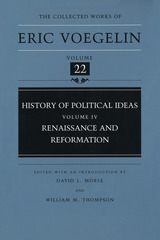 History of Political Ideas, Volume 4 (CW22): Renaissance and Reformation
Eric Voegelin, Edited & Intro by David L. Morse & William M. Thompson
University of Missouri Press, 1998 By closely examining the sources, movements, and persons of the Renaissance and the Reformation, Voegelin reveals the roots of today's political ideologies in this fourth volume of his History of Political Ideas. This insightful study lays the groundwork for Voegelin's critique of the modern period and is essential to an understanding of his later analysis. Voegelin identifies not one but two distinct beginnings of the movement toward modern political consciousness: the Renaissance and the Reformation. Historically, however, the powerful effects of the second have overshadowed the first. In this book, Voegelin carefully examines both periods and their presence in modern thought. The Renaissance, represented by the works of Niccolò Machiavelli, Desiderius Erasmus, and Thomas More, is characterized by a struggle for balance. Machiavelli and Erasmus both looked to a virtuous prince to achieve order, one calling for brute force and the other for Christian spirituality to reach their goal. Also a participant in the first beginning of modernity, More was a complex thinker identified as a saint both of the church and of the communist movement. The issues he explored in Utopia, as Voegelin demonstrates, indirectly gave rise to concepts that have profoundly affected Western history: colonization, imperialism, national socialism, and communism. Exploring the transition from the Renaissance to the Reformation is a brilliant chapter, "The People of God," which examines the sectarian movement. These pages contain the rich historical background that led to Voegelin's later conclusions about Gnosticism and its modern influences. Voegelin offers a controversial view of the Reformation as well as the political and religious situation directly preceding it. Yet he sheds light on the strengths and inadequacies of its key figures, Martin Luther and John Calvin. The driving force behind the Reformation stemmed solely from the powerful personality of Luther. What began as an abstract, purely technical discussion developed into a full-blown revolt. Later in the period, Calvin confronted the problems left behind by Luther and endeavored to create his own universal church to supplant the Catholic Church. His theory of a new elite would have a distinct impact on history. By examining the political ideas that first emerged during the Renaissance and Reformation, this fascinating volume provides a foundation for understanding the events of centuries to follow.
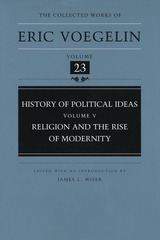 History of Political Ideas, Volume 5 (CW23): Religion and the Rise of Modernity
Eric Voegelin, Edited by James L. Wiser
University of Missouri Press, 1998 Examining the emergence of modernity within the philosophical and political debates of the sixteenth century, Religion and the Rise of Modernity resumes the analysis of the "great confusion" introduced in Volume IV of History of Political Ideas. Encompassing a vast range of events ignited by Luther's Ninety-Five Theses, this period is one of controversy, revolution, and partiality. Despite the era's fragmentation and complexity, Voegelin's insightful analysis clarifies its significance and suggests the lines of change converging at a point in the future: the medieval Christian understanding of a divinely created closed cosmos was being replaced by a distinctly modern form of human consciousness that posits man as the proper origin of meaning in the universe. Analyzing the most significant features of the great confusion, Voegelin examines a vast range of thought and issues of the age. From the more obvious thinkers to those less frequently studied, this volume features such figures as Calvin, Althusius, Hooker, Bracciolini, Savonarola, Copernicus, Tycho de Brahe, and Giordano Bruno. Devoting a considerable amount of attention to Jean Bodin, Voegelin presents him as a prophet of a new, true religion amid the civilizational disorder of the post-Christian era. Focusing on such traditional themes as monarchy, just war theory, and the philosophy of law, this volume also investigates issues within astrology, cosmology, and mathematics. Religion and the Rise of Modernity is a valuable work of scholarship not only because of its treatment of individual thinkers and doctrines influential in the sixteenth century and beyond but also because of its close examination of those experiences that formed the modern outlook.
 History of Political Ideas, Volume 6 (CW24): Revolution and the New Science
Eric Voegelin, Edited & Intro by Barry Cooper
University of Missouri Press, 1999 Volume VI of Voegelin's account of the history of Western political ideas continues from the point reached in the previous volume with the study of the mystic-philosopher Jean Bodin. Voegelin begins with a discussion of the conflict between Bishop Bossuet and Voltaire concerning the relationship between what is conventionally identified as sacred history and profane history. Bossuet maintained the traditional Christian position, the origin of which may be traced to Saint Augustine's City of God. Voegelin shows, however, that while Bossuet may have been heir to an adequate understanding of human existence, Voltaire drew attention to a series of historical facts, such as the comparative size of the Russian and Roman empires, the existence of Chinese civilization, and the discovery of the New World, that could be incorporated into Bossuet's account only with great difficulty or not at all. For the first time, the theoretical problem of the historicity of evocative symbols of political order becomes the focus of Voegelin's analysis. This major problem, which found a provisional solution in the New Science of Vico, was intertwined with several additional ones that may be summarized in terms of an increasing closure toward what Voegelin calls the world- transcendent ground of reality. Voegelin traces the consequences of the new attitudes and sentiments in terms of an increasing disorientation in personal, social, and political life, a disorientation that was expressed in increasingly impoverished experiences and accounts of history and of nature. Vico represents the great exception to this decline in the intellectual adequacy of modern political ideas and modern self- understanding. Readers familiar with Voegelin's New Science of Politics will find in the long, challenging, and brilliant chapter on Vico and his New Science one of the major textual analyses that sustained Voegelin's entire intellectual enterprise. Indeed, the chapter on Vico, along with similarly provocative and insightful chapters on Bodin and on Schelling in other volumes, may almost be read as an element of Voegelin's own spiritual autobiography.
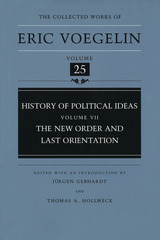 History of Political Ideas, Volume 7 (CW25): The New Order and Last Orientation
Eric Voegelin, Edited & Intro by Jurgen Gebhardt & Thomas A. Hollweck
University of Missouri Press, 1999 In The New Order and Last Orientation, Eric Voegelin explores two distinctly different yet equally important aspects of modernity. He begins by offering a vivid account of the political situation in seventeenth-century Europe after the decline of the church and the passing of the empire. Voegelin shows how the intellectual and political disorder of the period was met by such seemingly disparate responses as Grotius's theory of natural right, Hobbes's Leviathan, the role of the Fronde in the formation of the French national state, Spinoza's Tractatus Theologico-Politicus, and Locke's Second Treatise, the blueprint of a modern middle-class society. By putting these responses and the thought of Montesquieu, Hume, and others in the context of the birth pains of the national state and the emergence of a new self-understanding of man, Voegelin achieves a brilliant mixture of political history and profound philosophical analysis. Voegelin's verdict of modernity is pronounced most powerfully in the opening part of "Last Orientation," in the chapter entitled "Phenomenalism." His discussion of the intellectual confusion underlying the modern project of scientistic phenomenalism is the most original criticism leveled against modernity to date. It is at the same time the first step toward a recovery of reality through philosophy conceived as a science of substance in the spirit of Giordano Bruno. Voegelin's first example of such an effort at recovering reality is the chapter on Schelling, one of the spiritual realists who has not been affected by the prevailing rationalist or reductionist creeds that are part of the modern disorder. Schelling's indirect yet powerful influence on Schopenhauer, Nietzsche, and Freud more than justifies Voegelin's interest in his philosophy and character, even though Voegelin would later distance himself from some of Schelling's positions. The volume's concluding chapter, "Nietzsche and Pascal," applies the understanding gained from the study of Schelling to the thought of the most powerful critic of the age, Nietzsche. Nietzsche's self-avowed affinity with Pascal provides the key to an analysis of the strengths and weaknesses of his thought and reaffirms the connection that links the beginning of modernity with its most recent crises and the efforts to overcome them.
 History of Political Ideas, Volume 8 (CW26): Crisis and the Apocalypse of Man
Eric Voegelin, Edited & Intro by David Walsh.
University of Missouri Press, 1999 Reaching into our own time, Crisis and the Apocalypse of Man confronts the disintegration of traditional sources of meaning and the correlative attempt to generate new sources of order from within the self. Voegelin allows us to contemplate the crisis in its starkest terms as the apocalypse of man that now seeks to replace the apocalypse of God. The totalitarian upheaval that convulsed Voegelin's world, and whose aftermath still defines ours, is only the external manifestation of an inner spiritual turmoil. Its roots have been probed throughout the eight volumes of History of Political Ideas, but its emergence is marked by the age of Enlightenment. In our postmodern era, discussions of the collapse of the "enlightenment project" have become commonplace. Voegelin compels us to follow the great-souled individuals who sought to go from disintegration of the present toward evocations of order for the future. Such thinkers as Comte, Bakunin, and Marx suffered through the crisis and fully understood the need for a new outpouring of the spirit. They resolved to supply the deficiency themselves. As a consequence they launched us irrevocably on the path of the apocalypse of man. One of the great merits of Voegelin's analysis is his exposition of the pervasive character of this crisis. It is not confined to the megalomaniacal dreamers of a revolutionary apocalypse; rather, echoes of it are found in the more moderate Enlightenment preoccupation with progress to be attained through application of the scientific method. Faith in the capacity of instrumental reason to answer the ultimate questions of human existence defined men such as Voltaire, Helvétius, Diderot, D'Alembert, and Condorcet. It remains the authoritative faith of our world today, Voegelin argues, demonstrated by our continuing inability to step outside the parameters of the Enlightenment. Are we condemned, then, to oscillate between the rational incoherence of a science that never delivers on its promises and a now discredited revolutionary idealism that wreaks havoc in practice? This is the question toward which Voegelin's final volume points. While not direct, his response is evident everywhere. Crisis and the Apocalypse of Man could have been written only by a man who had reached his own resolution of the crisis.
History of Political Philosophy
Edited by Leo Strauss and Joseph Cropsey
University of Chicago Press, 2001 This volume provides an unequaled introduction to the thought of chief contributors to the Western tradition of political philosophy from classical Greek antiquity to the twentieth century. Written by specialists on the various philosophers, this third edition has been expanded significantly to include both new and revised essays.
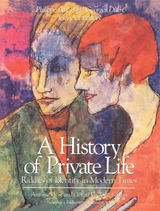 A History of Private Life
Antoine Prost
Harvard University Press This fifth and final volume in an award-winning series charts the remarkable inner history of our times from the tumult of World War I to the present day, when personal identity was released from its moorings in gender, family, social class, religion, politics, and nationality. Nine brilliant and bold historians present a dynamic picture of cultures in transition and in the process scrutinize a myriad of subjects—the sacrament of confession, volunteer hotlines, Nazi policies toward the family, the baby boom, evolving sexuality, the history of contraception, and ever-changing dress codes. They draw upon many unexpected sources, including divorce hearing transcripts, personal ads, and little-known demographic and consumer data.
Perhaps the most notable pattern to emerge is a polarizing of public and private realms. Productive labor shifts from the home to an impersonal public setting. Salaried or corporate employment replaces many independent, entrepreneurial jobs, and workers of all kinds aggressively pursue their leisure time—coffee and lunch breaks, weekends, vacations. Zoning laws segregate industrial and commercial areas from residential neighborhoods, which are no longer a supportive “theater” of benign surveillance, gossip, and mutual concern, but an assemblage of aloof and anonymous individuals or families. Scattered with personal possessions and appliances, homes grow large by yesterday's standards and are marked by elaborate spatial subdivisions; privacy is now possible even among one's own family. Men and women are obsessed with health, fitness, diet, and appearance as the body becomes the focal point of personal identity. Mirrors, once a rarity, are ubiquitous. In the search for sexual and individualistic fulfillment, romantic love becomes the foundation of marriage. Couples marry at an older age; families are smaller. The divorce rate rises, and with it the number of single-parent households. Women, entering the workforce in unprecedented numbers, frequently function as both breadwinner and homemaker. The authors interrelate these dramatic patterns with the changing roles of state and religion in family matters, the socialization of education and elder care, the growth of feminism, the impact of media on private life, and the nature of secrecy.
Comprehensive and astute, Riddles of Identity in Modern Times chronicles a period when the differentiation of life into public and private realms, once a luxury of the wealthy, gradually spread throughout the population. For better or worse, people can now be alone. This fifth volume, differing significantly from the French edition, portrays Italian, German, and American family life in the twentieth century. The authors of these additional chapters—Chiara Saraceno, Ingeborg Weber-Kellermann, and Elaine Tyler May—enlarge and enhance the already broad European and Atlantic canvas that depicts the modern identity.
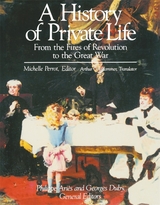 A History of Private Life
Michelle Perrot
Harvard University Press The nineteenth century was the golden age of private life, a time when the tentative self-consciousness of the Renaissance and earlier eras took recognizable form, and the supreme individual, with a political, scientific, and above all existential value, emerged. The present book, fourth in the popular series, chronicles this development from the tumult of the French Revolution to the outbreak of World War I—a century and a quarter of rapid, ungovernable change culminating in a conflict that, at a stroke, altered life in the Western world.
Guided by six eminent historians, we move from the Enlightenment of the eighteenth century, which conceived of man as a noble creature of reason, into nineteenth-century Romanticism with its affirmation of distinctively individual creatures in all their mystery and impulsiveness, exalting intuition as a mode of knowledge. More and more, men and women wanted to sleep alone, to be left alone to read and write, to dress as they pleased, to eat or drink anything they liked, to consort with and love whomever they fancied. Growing democracies advanced those wishes to the status of rights, expanding markets stimulated them, and migration encouraged them. That new frontier, the city, simultaneously weakened family and community constraints, spurred personal ambitions, and attenuated traditional beliefs.
The authors dramatize the nineteenth century’s organized effort to stabilize the boundary between public and private by mooring it to the family, with the father as sovereign. Such chapters as “The Sweet Delights of Home,” “The Family Triumphant,” and “Private Spaces” describe the new domestic ideal of the private dwelling as a refuge from perils and temptations in the public arena, the father as benevolent despot, the wife as contented practitioner of domestic arts, the children as small versions of adults, equipping themselves to follow in their parents’ righteous footsteps. Particularly in England, the middle class was central to the formation of this homely standard, which spread to the working classes through evangelical preaching, utilitarian writings, and economic changes and improvements that resulted in a separation of home and workplace. At the same time, the gentry was transforming castles into country houses, knights into foxhunters, and landowners into gentleman farmers. The domesticating process also expressed itself in hygienic practices (soap, waterclosets, bathtubs), fashions in clothing, and vogues in sports, courtship, and lovemaking.
From the time of the French Revolution, when private or special interests were looked upon as shadowy influences likely to foster conspiracy and treason, through the rapid transformations of the nineteenth century, the authors reveal the more radical forms of modernity that arrived with the twentieth century, with its explosions of trade and technology. Besides the external development of goods and conveniences, the expanses of the psyche were also being reorganized, bringing a new openness about sexuality liberated from procreation and marriage. Feminism, a relatively sporadic movement in the nineteenth century, became a more persistent force, while young people and the avant-garde continued to break the rules and push for change as an end in itself. As always, law lagged behind reality: in practice, more and more people rebelled against communal and family discipline. The declaration of war in 1917 put a hold on some of the flowering of individuality, but the unstoppable trend toward personality nurtured by private life was only temporarily curbed.
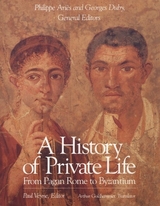 A History of Private Life
Paul Veyne
Harvard University Press, 1987 First of the widely celebrated and sumptuously illustrated series, this book reveals in intimate detail what life was really like in the ancient world. Behind the vast panorama of the pagan Roman empire, the reader discovers the intimate daily lives of citizens and slaves—from concepts of manhood and sexuality to marriage and the family, the roles of women, chastity and contraception, techniques of childbirth, homosexuality, religion, the meaning of virtue, and the separation of private and public spaces.
The emergence of Christianity in the West and the triumph of Christian morality with its emphasis on abstinence, celibacy, and austerity is startlingly contrasted with the profane and undisciplined private life of the Byzantine Empire. Using illuminating motifs, the authors weave a rich, colorful fabric ornamented with the results of new research and the broad interpretations that only masters of the subject can provide.
A History of Private Life
Georges Duby
Harvard University Press The second volume of A History of Private Life is a treasure-trove of rich and colorful detail culled from an astounding variety of sources. This absorbing “secret epic” constructs a vivid picture of peasant and patrician life in the eleventh to fifteenth centuries.
A History of Private Life
Roger Chartier
Harvard University Press Readers interested in history, and in the development of the modern sensibility, will relish this large-scale yet intimately detailed examination of the blossoming of the ordinary and extraordinary people of the Renaissance and the Enlightenment. This third in the popular five-volume series celebrates the emergence of individualism and the manifestations of a burgeoning self-consciousness over three centuries.
History of Public Health in New York City, 1625-1866: Volume 1
John Duffy
Russell Sage Foundation, 1968 Traces the development of the sanitary and health problems of New York City from earliest Dutch times to the culmination of a nineteenth-century reform movement that produced the Metropolitan Health Act of 1866, the forerunner of the present New York City Department of Health. Professor Duffy shows the city's transition from a clean and healthy colonial settlement to an epidemic-ridden community in the eighteenth century, as the city outgrew its health and sanitation facilities. He describes the slow growth of a demand for adequate health laws in the mid-nineteenth century, leading to the establishment of the first permanent health agency in 1866.
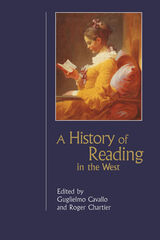 A History of Reading in the West
Guglielmo Cavallo
University of Massachusetts Press, 1999 Books and other texts have not always been read in the way that we read them today. The modern practice of reading—privately, silently, with the eyes alone—is only one way of reading, which for many centuries existed alongside other forms. In the ancient world, in the Middle Ages, and as late as the seventeenth century, many texts were written for the voice. They were addressed to the ear as much as the eye, and they used forms that were oriented toward the demands of oral performance. This is one of the themes explored in this landmark volume. Written by a distinguished group of international contributors, it analyzes the transformations of reading methods and materials over the ages, showing that revolutions of reading have generally preceded revolutions of the book. The authors examine not only the technical innovations that changed physical aspects of books and other texts, but also the evolving forms of reading and the growth and transformation of the reading public. The volume will be invaluable to students of cultural history and to all those who want a fresh perspective on the history of books and their uses.
History of Religions, volume 60 number 4 (May 2021)
The University of Chicago Press
University of Chicago Press Journals, 2021 This is volume 60 issue 4 of History of Religions. The first academic journal devoted exclusively to comparative religious history, History of Religions has set the standard for the study of religious phenomena from prehistory to modern times. HR publishes fresh and insightful scholarship that is engaged both with particular traditions, places, and times and also speaks to broader methodological and/or theoretical issues in the study of religion. It encourages critical conversations in the field with review articles and comprehensive book reviews by distinguished scholars.
History of Religions, volume 61 number 1 (August 2021)
The University of Chicago Press
University of Chicago Press Journals, 2021 This is volume 61 issue 1 of History of Religions. The first academic journal devoted exclusively to comparative religious history, History of Religions has set the standard for the study of religious phenomena from prehistory to modern times. HR publishes fresh and insightful scholarship that is engaged both with particular traditions, places, and times and also speaks to broader methodological and/or theoretical issues in the study of religion. It encourages critical conversations in the field with review articles and comprehensive book reviews by distinguished scholars.
History of Religions, volume 61 number 2 (November 2021)
The University of Chicago Press
University of Chicago Press Journals, 2021 This is volume 61 issue 2 of History of Religions. The first academic journal devoted exclusively to comparative religious history, History of Religions has set the standard for the study of religious phenomena from prehistory to modern times. HR publishes fresh and insightful scholarship that is engaged both with particular traditions, places, and times and also speaks to broader methodological and/or theoretical issues in the study of religion. It encourages critical conversations in the field with review articles and comprehensive book reviews by distinguished scholars.
History of Religions, volume 61 number 3 (February 2022)
The University of Chicago Press
University of Chicago Press Journals, 2022 This is volume 61 issue 3 of History of Religions. The first academic journal devoted exclusively to comparative religious history, History of Religions has set the standard for the study of religious phenomena from prehistory to modern times. HR publishes fresh and insightful scholarship that is engaged both with particular traditions, places, and times and also speaks to broader methodological and/or theoretical issues in the study of religion. It encourages critical conversations in the field with review articles and comprehensive book reviews by distinguished scholars.
History of Religions, volume 61 number 4 (May 2022)
The University of Chicago Press
University of Chicago Press Journals, 2022 This is volume 61 issue 4 of History of Religions. The first academic journal devoted exclusively to comparative religious history, History of Religions has set the standard for the study of religious phenomena from prehistory to modern times. HR publishes fresh and insightful scholarship that is engaged both with particular traditions, places, and times and also speaks to broader methodological and/or theoretical issues in the study of religion. It encourages critical conversations in the field with review articles and comprehensive book reviews by distinguished scholars.
History of Religions, volume 62 number 1 (August 2022)
The University of Chicago Press
University of Chicago Press Journals, 2022 This is volume 62 issue 1 of History of Religions. The first academic journal devoted exclusively to comparative religious history, History of Religions has set the standard for the study of religious phenomena from prehistory to modern times. HR publishes fresh and insightful scholarship that is engaged both with particular traditions, places, and times and also speaks to broader methodological and/or theoretical issues in the study of religion. It encourages critical conversations in the field with review articles and comprehensive book reviews by distinguished scholars.
History of Religions, volume 62 number 2 (November 2022)
The University of Chicago Press
University of Chicago Press Journals, 2022 This is volume 62 issue 2 of History of Religions. The first academic journal devoted exclusively to comparative religious history, History of Religions has set the standard for the study of religious phenomena from prehistory to modern times. HR publishes fresh and insightful scholarship that is engaged both with particular traditions, places, and times and also speaks to broader methodological and/or theoretical issues in the study of religion. It encourages critical conversations in the field with review articles and comprehensive book reviews by distinguished scholars.
History of Religions, volume 62 number 3 (February 2023)
The University of Chicago Press
University of Chicago Press Journals, 2023 This is volume 62 issue 3 of History of Religions. The first academic journal devoted exclusively to comparative religious history, History of Religions has set the standard for the study of religious phenomena from prehistory to modern times. HR publishes fresh and insightful scholarship that is engaged both with particular traditions, places, and times and also speaks to broader methodological and/or theoretical issues in the study of religion. It encourages critical conversations in the field with review articles and comprehensive book reviews by distinguished scholars.
History of Religions, volume 62 number 4 (May 2023)
The University of Chicago Press
University of Chicago Press Journals, 2023 This is volume 62 issue 4 of History of Religions. The first academic journal devoted exclusively to comparative religious history, History of Religions has set the standard for the study of religious phenomena from prehistory to modern times. HR publishes fresh and insightful scholarship that is engaged both with particular traditions, places, and times and also speaks to broader methodological and/or theoretical issues in the study of religion. It encourages critical conversations in the field with review articles and comprehensive book reviews by distinguished scholars.
History of Religions, volume 63 number 1 (August 2023)
The University of Chicago Press
University of Chicago Press Journals, 2023 This is volume 63 issue 1 of History of Religions. The first academic journal devoted exclusively to comparative religious history, History of Religions has set the standard for the study of religious phenomena from prehistory to modern times. HR publishes fresh and insightful scholarship that is engaged both with particular traditions, places, and times and also speaks to broader methodological and/or theoretical issues in the study of religion. It encourages critical conversations in the field with review articles and comprehensive book reviews by distinguished scholars.
History of Religions, volume 63 number 2 (November 2023)
The University of Chicago Press
University of Chicago Press Journals, 2023 This is volume 63 issue 2 of History of Religions. The first academic journal devoted exclusively to comparative religious history, History of Religions has set the standard for the study of religious phenomena from prehistory to modern times. HR publishes fresh and insightful scholarship that is engaged both with particular traditions, places, and times and also speaks to broader methodological and/or theoretical issues in the study of religion. It encourages critical conversations in the field with review articles and comprehensive book reviews by distinguished scholars.
History of Religions, volume 63 number 3 (February 2024)
The University of Chicago Press
University of Chicago Press Journals, 2024 This is volume 63 issue 3 of History of Religions. The first academic journal devoted exclusively to comparative religious history, History of Religions has set the standard for the study of religious phenomena from prehistory to modern times. HR publishes fresh and insightful scholarship that is engaged both with particular traditions, places, and times and also speaks to broader methodological and/or theoretical issues in the study of religion. It encourages critical conversations in the field with review articles and comprehensive book reviews by distinguished scholars.
History of Religions, volume 63 number 4 (May 2024)
The University of Chicago Press
University of Chicago Press Journals, 2024 This is volume 63 issue 4 of History of Religions. The first academic journal devoted exclusively to comparative religious history, History of Religions has set the standard for the study of religious phenomena from prehistory to modern times. HR publishes fresh and insightful scholarship that is engaged both with particular traditions, places, and times and also speaks to broader methodological and/or theoretical issues in the study of religion. It encourages critical conversations in the field with review articles and comprehensive book reviews by distinguished scholars.
History of Religions, volume 64 number 1 (August 2024)
The University of Chicago Press
University of Chicago Press Journals, 2024 This is volume 64 issue 1 of History of Religions. The first academic journal devoted exclusively to comparative religious history, History of Religions has set the standard for the study of religious phenomena from prehistory to modern times. HR publishes fresh and insightful scholarship that is engaged both with particular traditions, places, and times and also speaks to broader methodological and/or theoretical issues in the study of religion. It encourages critical conversations in the field with review articles and comprehensive book reviews by distinguished scholars.
History of Religions, volume 64 number 2 (November 2024)
The University of Chicago Press
University of Chicago Press Journals, 2024 This is volume 64 issue 2 of History of Religions. The first academic journal devoted exclusively to comparative religious history, History of Religions has set the standard for the study of religious phenomena from prehistory to modern times. HR publishes fresh and insightful scholarship that is engaged both with particular traditions, places, and times and also speaks to broader methodological and/or theoretical issues in the study of religion. It encourages critical conversations in the field with review articles and comprehensive book reviews by distinguished scholars.
History of Religions, volume 64 number 3 (February 2025)
The University of Chicago Press
University of Chicago Press Journals, 2025 This is volume 64 issue 3 of History of Religions. The first academic journal devoted exclusively to comparative religious history, History of Religions has set the standard for the study of religious phenomena from prehistory to modern times. HR publishes fresh and insightful scholarship that is engaged both with particular traditions, places, and times and also speaks to broader methodological and/or theoretical issues in the study of religion. It encourages critical conversations in the field with review articles and comprehensive book reviews by distinguished scholars.
History of Religions, volume 64 number 4 (May 2025)
The University of Chicago Press
University of Chicago Press Journals, 2025 This is volume 64 issue 4 of History of Religions. The first academic journal devoted exclusively to comparative religious history, History of Religions has set the standard for the study of religious phenomena from prehistory to modern times. HR publishes fresh and insightful scholarship that is engaged both with particular traditions, places, and times and also speaks to broader methodological and/or theoretical issues in the study of religion. It encourages critical conversations in the field with review articles and comprehensive book reviews by distinguished scholars.
History of Religions, volume 65 number 1 (August 2025)
The University of Chicago Press
University of Chicago Press Journals, 2025 This is volume 65 issue 1 of History of Religions. The first academic journal devoted exclusively to comparative religious history, History of Religions has set the standard for the study of religious phenomena from prehistory to modern times. HR publishes fresh and insightful scholarship that is engaged both with particular traditions, places, and times and also speaks to broader methodological and/or theoretical issues in the study of religion. It encourages critical conversations in the field with review articles and comprehensive book reviews by distinguished scholars.
History of Religious Ideas, Volume 2: From Gautama Buddha to the Triumph of Christianity
Mircea Eliade
University of Chicago Press, 1982 In volume 2 of this monumental work, Mircea Eliade continues his magisterial progress through the history of religious ideas. The religions of ancient China, Brahmanism and Hinduism, Buddha and his contemporaries, Roman religion, Celtic and German religions, Judaism, the Hellenistic period, the Iranian syntheses, and the birth of Christianity—all are encompassed in this volume.
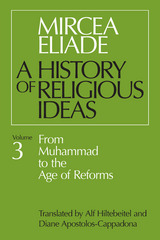 History of Religious Ideas, Volume 3: From Muhammad to the Age of Reforms
Mircea Eliade
University of Chicago Press, 1985 This volume completes the immensely learned three-volume A History of Religious Ideas. Eliade examines the movement of Jewish thought out of ancient Eurasia, the Christian transformation of the Mediterranean area and Europe, and the rise and diffusion of Islam from approximately the sixth through the seventeenth centuries. Eliade's vast knowledge of past and present scholarship provides a synthesis that is unparalleled. In addition to reviewing recent interpretations of the individual traditions, he explores the interactions of the three religions and shows their continuing mutual influence to be subtle but unmistakable.
As in his previous work, Eliade pays particular attention to heresies, folk beliefs, and cults of secret wisdom, such as alchemy and sorcery, and continues the discussion, begun in earlier volumes, of pre-Christian shamanistic practices in northern Europe and the syncretistic tradition of Tibetan Buddhism. These subcultures, he maintains, are as important as the better-known orthodoxies to a full understanding of Judaism, Christianity, and Islam.
History of Rome, Volume I: Books 1–2
Livy
Harvard University Press, 1976 Rome, from the beginning.
Livy (Titus Livius), the great Roman historian, was born at or near Patavium (Padua) in 64 or 59 BC; he may have lived mostly in Rome but died at Patavium, in AD 12 or 17.
Livy’s only extant work is part of his history of Rome from the foundation of the city to 9 BC. Of its 142 books, we have just thirty-five, and short summaries of all the rest except two. The whole work was, long after his death, divided into Decades or series of ten. Books 1–10 we have entire; books 11–20 are lost; books 21–45 are entire, except parts of 41 and 43–45. Of the rest only fragments and the summaries remain. In splendid style Livy, a man of wide sympathies and proud of Rome’s past, presented an uncritical but clear and living narrative of Rome’s rise to greatness.
The Loeb Classical Library edition of Livy is in fourteen volumes. The last volume includes a comprehensive index.
History of Rome, Volume II: Books 3–4
Livy
Harvard University Press Rome, from the beginning.
Livy (Titus Livius), the great Roman historian, was born at or near Patavium (Padua) in 64 or 59 BC; he may have lived mostly in Rome but died at Patavium, in AD 12 or 17.
Livy’s only extant work is part of his history of Rome from the foundation of the city to 9 BC. Of its 142 books, we have just thirty-five, and short summaries of all the rest except two. The whole work was, long after his death, divided into Decades or series of ten. Books 1–10 we have entire; books 11–20 are lost; books 21–45 are entire, except parts of 41 and 43–45. Of the rest only fragments and the summaries remain. In splendid style Livy, a man of wide sympathies and proud of Rome’s past, presented an uncritical but clear and living narrative of Rome’s rise to greatness.
The Loeb Classical Library edition of Livy is in fourteen volumes. The last volume includes a comprehensive index.
History of Rome, Volume III: Books 5–7
Livy
Harvard University Press Rome, from the beginning.
Livy (Titus Livius), the great Roman historian, was born at or near Patavium (Padua) in 64 or 59 BC; he may have lived mostly in Rome but died at Patavium, in AD 12 or 17.
Livy’s only extant work is part of his history of Rome from the foundation of the city to 9 BC. Of its 142 books, we have just thirty-five, and short summaries of all the rest except two. The whole work was, long after his death, divided into Decades or series of ten. Books 1–10 we have entire; books 11–20 are lost; books 21–45 are entire, except parts of 41 and 43–45. Of the rest only fragments and the summaries remain. In splendid style Livy, a man of wide sympathies and proud of Rome’s past, presented an uncritical but clear and living narrative of Rome’s rise to greatness.
The Loeb Classical Library edition of Livy is in fourteen volumes. The last volume includes a comprehensive index.
History of Rome, Volume IV: Books 8–10
Livy
Harvard University Press Rome, from the beginning.
Livy (Titus Livius), the great Roman historian, was born at or near Patavium (Padua) in 64 or 59 BC; he may have lived mostly in Rome but died at Patavium, in AD 12 or 17.
Livy’s only extant work is part of his history of Rome from the foundation of the city to 9 BC. Of its 142 books, we have just thirty-five, and short summaries of all the rest except two. The whole work was, long after his death, divided into Decades or series of ten. Books 1–10 we have entire; books 11–20 are lost; books 21–45 are entire, except parts of 41 and 43–45. Of the rest only fragments and the summaries remain. In splendid style Livy, a man of wide sympathies and proud of Rome’s past, presented an uncritical but clear and living narrative of Rome’s rise to greatness.
The Loeb Classical Library edition of Livy is in fourteen volumes. The last volume includes a comprehensive index.
 History of Rome, Volume IX: Books 31–34
Livy
Harvard University Press, 2017 Rome, from the beginning.
Livy (Titus Livius), the great Roman historian, was born at Patavium (Padua) in 64 or 59 BC, where after years in Rome he died in AD 12 or 17.
Livy’s history, composed as the imperial autocracy of Augustus was replacing the republican system that had stood for over five hundred years, presents in splendid style a vivid narrative of Rome’s rise from the traditional foundation of the city in 753 or 751 BC to 9 BC and illustrates the collective and individual virtues necessary to achieve and maintain such greatness.
Of its 142 books, conventionally divided into pentads and decades, we have 1–10 and 21–45 complete, and short summaries (periochae) of all the rest except 41 and 43–45; 11–20 are lost, and of the rest only fragments and the summaries remain.
The fourth decade comprises two recognizable pentads: Books 31–35 narrate the Second Macedonian War (200–196) and its aftermath (Rome’s growing hegemony over Greece and tension with Antiochus III, the Seleucid ruler of the Near East), then Books 36–40 the years from 191 to 180, when Rome crushed and shrank Antiochus’ empire to extend and consolidate her mastery over the Hellenistic states. Also included are detailed narratives of Rome’s domestic politics and society, and of her western wars.
This edition of the fourth decade, which replaces the original Loeb edition by Evan T. Sage, offers a text based on Briscoe’s edition, a fresh translation, and ample annotation fully current with modern scholarship.
History of Rome, Volume IX: Books 31-34
Livy
Harvard University Press Livy (Titus Livius), the great Roman historian, was born at or near Patavium (Padua) in 64 or 59 BCE; he may have lived mostly in Rome but died at Patavium, in 12 or 17 CE.
Livy's only extant work is part of his history of Rome from the foundation of the city to 9 BCE. Of its 142 books, we have just 35, and short summaries of all the rest except two. The whole work was, long after his death, divided into Decades or series of ten. Books 110 we have entire; books 1120 are lost; books 2145 are entire, except parts of 41 and 4345. Of the rest only fragments and the summaries remain. In splendid style Livy, a man of wide sympathies and proud of Rome's past, presented an uncritical but clear and living narrative of the rise of Rome to greatness.
The Loeb Classical Library edition of Livy is in fourteen volumes. The last volume includes a comprehensive index.
 History of Rome, Volume V: Books 21–22
Livy
Harvard University Press, 2017 Rome, from the beginning.
Livy (Titus Livius), the great Roman historian, was born at Patavium (Padua) in 64 or 59 BC, where after years in Rome he died in AD 12 or 17. Livy’s history, composed as the imperial autocracy of Augustus was replacing the republican system that had stood for over five hundred years, presents in splendid style a vivid narrative of Rome’s rise from the traditional foundation of the city in 753 or 751 BC to 9 BC and illustrates the collective and individual virtues necessary to achieve and maintain such greatness.
Of its 142 books, conventionally divided into pentads and decades, we have 1–10 and 21–45 complete, and short summaries (periochae) of all the rest except 41 and 43–45; 11–20 are lost, and of the rest only fragments and the summaries remain.
The third decade constitutes our fullest surviving account of the momentous Second Punic (or Hannibalic) War, featuring a famous gallery of leaders Roman, Carthaginian, and Greek, all memorably drawn. It comprises two recognizable pentads: Books 21–25 narrate the run-up to conflict and Rome’s struggles in its first phase, with Hannibal dominant; Books 26–30 relate Rome’s revival and final victory, as the focus shifts to Scipio Africanus.
This edition of the third decade, which replaces the original Loeb editions by B. O. Foster (Books 21–22) and Frank Gardner Moore (Books 23–30), offers a text based on the critical editions by John Briscoe (Books 21–25) and P. G. Walsh (Books 26–30), a fresh translation, and ample annotation fully current with modern scholarship.
History of Rome, Volume V: Books 21-22
Livy
Harvard University Press Livy (Titus Livius), the great Roman historian, was born at or near Patavium (Padua) in 64 or 59 BCE; he may have lived mostly in Rome but died at Patavium, in 12 or 17 CE.
Livy's only extant work is part of his history of Rome from the foundation of the city to 9 BCE. Of its 142 books, we have just 35, and short summaries of all the rest except two. The whole work was, long after his death, divided into Decades or series of ten. Books 110 we have entire; books 1120 are lost; books 2145 are entire, except parts of 41 and 4345. Of the rest only fragments and the summaries remain. In splendid style Livy, a man of wide sympathies and proud of Rome's past, presented an uncritical but clear and living narrative of the rise of Rome to greatness.
The Loeb Classical Library edition of Livy is in fourteen volumes. The last volume includes a comprehensive index.
 History of Rome, Volume VI: Books 23–25
Livy
Harvard University Press, 2017 Rome, from the beginning.
Livy (Titus Livius), the great Roman historian, was born at Patavium (Padua) in 64 or 59 BC, where after years in Rome he died in AD 12 or 17. Livy’s history, composed as the imperial autocracy of Augustus was replacing the republican system that had stood for over five hundred years, presents in splendid style a vivid narrative of Rome’s rise from the traditional foundation of the city in 753 or 751 BC to 9 BC and illustrates the collective and individual virtues necessary to achieve and maintain such greatness.
Of its 142 books, conventionally divided into pentads and decades, we have 1–10 and 21–45 complete, and short summaries (periochae) of all the rest except 41 and 43–45; 11–20 are lost, and of the rest only fragments and the summaries remain.
The third decade constitutes our fullest surviving account of the momentous Second Punic (or Hannibalic) War, featuring a famous gallery of leaders Roman, Carthaginian, and Greek, all memorably drawn. It comprises two recognizable pentads: Books 21–25 narrate the run-up to conflict and Rome’s struggles in its first phase, with Hannibal dominant; Books 26–30 relate Rome’s revival and final victory, as the focus shifts to Scipio Africanus.
This edition of the third decade, which replaces the original Loeb editions by B. O. Foster (Books 21–22) and Frank Gardner Moore (Books 23–30), offers a text based on the critical editions by John Briscoe (Books 21–25) and P. G. Walsh (Books 26–30), a fresh translation, and ample annotation fully current with modern scholarship.
History of Rome, Volume VI: Books 23-25
Livy
Harvard University Press Livy (Titus Livius), the great Roman historian, was born at or near Patavium (Padua) in 64 or 59 BCE; he may have lived mostly in Rome but died at Patavium, in 12 or 17 CE.
Livy's only extant work is part of his history of Rome from the foundation of the city to 9 BCE. Of its 142 books, we have just 35, and short summaries of all the rest except two. The whole work was, long after his death, divided into Decades or series of ten. Books 110 we have entire; books 1120 are lost; books 2145 are entire, except parts of 41 and 4345. Of the rest only fragments and the summaries remain. In splendid style Livy, a man of wide sympathies and proud of Rome's past, presented an uncritical but clear and living narrative of the rise of Rome to greatness.
The Loeb Classical Library edition of Livy is in fourteen volumes. The last volume includes a comprehensive index.
History of Rome, Volume VII: Books 26-27
Livy
Harvard University Press, 2004 Livy (Titus Livius), the great Roman historian, was born at or near Patavium (Padua) in 64 or 59 BCE; he may have lived mostly in Rome but died at Patavium, in 12 or 17 CE.
Livy's only extant work is part of his history of Rome from the foundation of the city to 9 BCE. Of its 142 books, we have just 35, and short summaries of all the rest except two. The whole work was, long after his death, divided into Decades or series of ten. Books 110 we have entire; books 1120 are lost; books 2145 are entire, except parts of 41 and 4345. Of the rest only fragments and the summaries remain. In splendid style Livy, a man of wide sympathies and proud of Rome's past, presented an uncritical but clear and living narrative of the rise of Rome to greatness.
The Loeb Classical Library edition of Livy is in fourteen volumes. The last volume includes a comprehensive index.
 History of Rome, Volume VII: Books 26–27
Livy
Harvard University Press, 2017 Rome, from the beginning.
Livy (Titus Livius), the great Roman historian, was born at Patavium (Padua) in 64 or 59 BC, where after years in Rome he died in AD 12 or 17. Livy’s history, composed as the imperial autocracy of Augustus was replacing the republican system that had stood for over five hundred years, presents in splendid style a vivid narrative of Rome’s rise from the traditional foundation of the city in 753 or 751 BC to 9 BC and illustrates the collective and individual virtues necessary to achieve and maintain such greatness.
Of its 142 books, conventionally divided into pentads and decades, we have 1–10 and 21–45 complete, and short summaries (periochae) of all the rest except 41 and 43–45; 11–20 are lost, and of the rest only fragments and the summaries remain.
The third decade constitutes our fullest surviving account of the momentous Second Punic (or Hannibalic) War, featuring a famous gallery of leaders Roman, Carthaginian, and Greek, all memorably drawn. It comprises two recognizable pentads: Books 21–25 narrate the run-up to conflict and Rome’s struggles in its first phase, with Hannibal dominant; Books 26–30 relate Rome’s revival and final victory, as the focus shifts to Scipio Africanus.
This edition of the third decade, which replaces the original Loeb editions by B. O. Foster (Books 21–22) and Frank Gardner Moore (Books 23–30), offers a text based on the critical editions by John Briscoe (Books 21–25) and P. G. Walsh (Books 26–30), a fresh translation, and ample annotation fully current with modern scholarship.
 History of Rome, Volume VIII: Books 28–30
Livy
Harvard University Press, 2017 Rome, from the beginning.
Livy (Titus Livius), the great Roman historian, was born at Patavium (Padua) in 64 or 59 BC, where after years in Rome he died in AD 12 or 17. Livy’s history, composed as the imperial autocracy of Augustus was replacing the republican system that had stood for over five hundred years, presents in splendid style a vivid narrative of Rome’s rise from the traditional foundation of the city in 753 or 751 BC to 9 BC and illustrates the collective and individual virtues necessary to achieve and maintain such greatness.
Of its 142 books, conventionally divided into pentads and decades, we have 1–10 and 21–45 complete, and short summaries (periochae) of all the rest except 41 and 43–45; 11–20 are lost, and of the rest only fragments and the summaries remain.
The third decade constitutes our fullest surviving account of the momentous Second Punic (or Hannibalic) War, featuring a famous gallery of leaders Roman, Carthaginian, and Greek, all memorably drawn. It comprises two recognizable pentads: Books 21–25 narrate the run-up to conflict and Rome’s struggles in its first phase, with Hannibal dominant; Books 26–30 relate Rome’s revival and final victory, as the focus shifts to Scipio Africanus.
This edition of the third decade, which replaces the original Loeb editions by B. O. Foster (Books 21–22) and Frank Gardner Moore (Books 23–30), offers a text based on the critical editions by John Briscoe (Books 21–25) and P. G. Walsh (Books 26–30), a fresh translation, and ample annotation fully current with modern scholarship.
History of Rome, Volume VIII: Books 28–30
Livy
Harvard University Press Livy (Titus Livius), the great Roman historian, was born at or near Patavium (Padua) in 64 or 59 BCE; he may have lived mostly in Rome but died at Patavium, in 12 or 17 CE.
Livy's only extant work is part of his history of Rome from the foundation of the city to 9 BCE. Of its 142 books, we have just 35, and short summaries of all the rest except two. The whole work was, long after his death, divided into Decades or series of ten. Books 110 we have entire; books 1120 are lost; books 2145 are entire, except parts of 41 and 4345. Of the rest only fragments and the summaries remain. In splendid style Livy, a man of wide sympathies and proud of Rome's past, presented an uncritical but clear and living narrative of the rise of Rome to greatness.
The Loeb Classical Library edition of Livy is in fourteen volumes. The last volume includes a comprehensive index.
 History of Rome, Volume X: Books 35–37
Livy
Harvard University Press, 2017 Rome, from the beginning.
Livy (Titus Livius), the great Roman historian, was born at Patavium (Padua) in 64 or 59 BC, where after years in Rome he died in AD 12 or 17.
Livy’s history, composed as the imperial autocracy of Augustus was replacing the republican system that had stood for over five hundred years, presents in splendid style a vivid narrative of Rome’s rise from the traditional foundation of the city in 753 or 751 BC to 9 BC and illustrates the collective and individual virtues necessary to achieve and maintain such greatness.
Of its 142 books, conventionally divided into pentads and decades, we have 1–10 and 21–45 complete, and short summaries (periochae) of all the rest except 41 and 43–45; 11–20 are lost, and of the rest only fragments and the summaries remain.
The fourth decade comprises two recognizable pentads: Books 31–35 narrate the Second Macedonian War (200–196) and its aftermath (Rome’s growing hegemony over Greece and tension with Antiochus III, the Seleucid ruler of the Near East), then Books 36–40 the years from 191 to 180, when Rome crushed and shrank Antiochus’ empire to extend and consolidate her mastery over the Hellenistic states. Also included are detailed narratives of Rome’s domestic politics and society, and of her western wars.
This edition of the fourth decade, which replaces the original Loeb edition by Evan T. Sage, offers a text based on Briscoe’s edition, a fresh translation, and ample annotation fully current with modern scholarship.
History of Rome, Volume X: Books 35-37
Livy
Harvard University Press Livy (Titus Livius), the great Roman historian, was born at or near Patavium (Padua) in 64 or 59 BCE; he may have lived mostly in Rome but died at Patavium, in 12 or 17 CE.
Livy's only extant work is part of his history of Rome from the foundation of the city to 9 BCE. Of its 142 books, we have just 35, and short summaries of all the rest except two. The whole work was, long after his death, divided into Decades or series of ten. Books 110 we have entire; books 1120 are lost; books 2145 are entire, except parts of 41 and 4345. Of the rest only fragments and the summaries remain. In splendid style Livy, a man of wide sympathies and proud of Rome's past, presented an uncritical but clear and living narrative of the rise of Rome to greatness.
The Loeb Classical Library edition of Livy is in fourteen volumes. The last volume includes a comprehensive index.
History of Rome, Volume XI: Books 38-39
Livy
Harvard University Press Livy (Titus Livius), the great Roman historian, was born at or near Patavium (Padua) in 64 or 59 BCE; he may have lived mostly in Rome but died at Patavium, in 12 or 17 CE.
Livy's only extant work is part of his history of Rome from the foundation of the city to 9 BCE. Of its 142 books, we have just 35, and short summaries of all the rest except two. The whole work was, long after his death, divided into Decades or series of ten. Books 110 we have entire; books 1120 are lost; books 2145 are entire, except parts of 41 and 4345. Of the rest only fragments and the summaries remain. In splendid style Livy, a man of wide sympathies and proud of Rome's past, presented an uncritical but clear and living narrative of the rise of Rome to greatness.
The Loeb Classical Library edition of Livy is in fourteen volumes. The last volume includes a comprehensive index.
 History of Rome, Volume XI: Books 38–40
Livy
Harvard University Press, 2017 Rome, from the beginning.
Livy (Titus Livius), the great Roman historian, was born at Patavium (Padua) in 64 or 59 BC, where after years in Rome he died in AD 12 or 17.
Livy’s history, composed as the imperial autocracy of Augustus was replacing the republican system that had stood for over five hundred years, presents in splendid style a vivid narrative of Rome’s rise from the traditional foundation of the city in 753 or 751 BC to 9 BC and illustrates the collective and individual virtues necessary to achieve and maintain such greatness.
Of its 142 books, conventionally divided into pentads and decades, we have 1–10 and 21–45 complete, and short summaries (periochae) of all the rest except 41 and 43–45; 11–20 are lost, and of the rest only fragments and the summaries remain.
The fourth decade comprises two recognizable pentads: Books 31–35 narrate the Second Macedonian War (200–196) and its aftermath (Rome’s growing hegemony over Greece and tension with Antiochus III, the Seleucid ruler of the Near East), then Books 36–40 the years from 191 to 180, when Rome crushed and shrank Antiochus’ empire to extend and consolidate her mastery over the Hellenistic states. Also included are detailed narratives of Rome’s domestic politics and society, and of her western wars.
This edition of the fourth decade, which replaces the original Loeb edition by Evan T. Sage, offers a text based on Briscoe’s edition, a fresh translation, and ample annotation fully current with modern scholarship.
History of Rome, Volume XII: Books 40–42
Livy
Harvard University Press Rome, from the beginning.
Livy (Titus Livius), the great Roman historian, was born at or near Patavium (Padua) in 64 or 59 BC; he may have lived mostly in Rome but died at Patavium, in AD 12 or 17.
Livy’s only extant work is part of his history of Rome from the foundation of the city to 9 BC. Of its 142 books, we have just thirty-five, and short summaries of all the rest except two. The whole work was, long after his death, divided into Decades or series of ten. Books 1–10 we have entire; books 11–20 are lost; books 21–45 are entire, except parts of 41 and 43–45. Of the rest only fragments and the summaries remain. In splendid style Livy, a man of wide sympathies and proud of Rome’s past, presented an uncritical but clear and living narrative of Rome’s rise to greatness.
The Loeb Classical Library edition of Livy is in fourteen volumes. The last volume includes a comprehensive index.
History of Rome, Volume XIII: Books 43–45
Livy
Harvard University Press Rome, from the beginning.
Livy (Titus Livius), the great Roman historian, was born at or near Patavium (Padua) in 64 or 59 BC; he may have lived mostly in Rome but died at Patavium, in AD 12 or 17.
Livy’s only extant work is part of his history of Rome from the foundation of the city to 9 BC. Of its 142 books, we have just thirty-five, and short summaries of all the rest except two. The whole work was, long after his death, divided into Decades or series of ten. Books 1–10 we have entire; books 11–20 are lost; books 21–45 are entire, except parts of 41 and 43–45. Of the rest only fragments and the summaries remain. In splendid style Livy, a man of wide sympathies and proud of Rome’s past, presented an uncritical but clear and living narrative of Rome’s rise to greatness.
The Loeb Classical Library edition of Livy is in fourteen volumes. The last volume includes a comprehensive index.
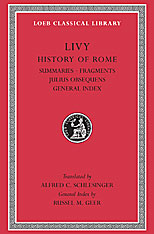 History of Rome, Volume XIV: Summaries. Fragments. Julius Obsequens. General Index
Livy
Harvard University Press, 2004 Rome, from the beginning.
Livy (Titus Livius), the great Roman historian, was born at or near Patavium (Padua) in 64 or 59 BC; he may have lived mostly in Rome but died at Patavium, in AD 12 or 17.
Livy’s only extant work is part of his history of Rome from the foundation of the city to 9 BC. Of its 142 books, we have just thirty-five, and short summaries of all the rest except two. The whole work was, long after his death, divided into Decades or series of ten. Books 1–10 we have entire; books 11–20 are lost; books 21–45 are entire, except parts of 41 and 43–45. Of the rest only fragments and the summaries remain. In splendid style Livy, a man of wide sympathies and proud of Rome’s past, presented an uncritical but clear and living narrative of Rome’s rise to greatness.
The Loeb Classical Library edition of Livy is in fourteen volumes. The last volume includes a comprehensive index.
A History of Russia: Medieval, Modern, Contemporary, c.882-1996
Paul Dukes
Duke University Press, 1998 Is today’s Russia capable of democracy, the free market, and a pluralist ideology? In this new edition of A History of Russia, Paul Dukes investigates these questions, taking into full account the extraordinary changes that have occurred since the arrival of first Mikhail Gorbachev and then Boris Yeltsin. Substantially expanded and rewritten, this new edition sets these events within the context of over 1100 years of Russian history. Dukes reviews the successive phases in Russian history from medieval Kiev and Muscovy to the current post-Soviet Union, with distinctive sections on political, economic, and cultural aspects of each period.
With its breadth of scope and conciseness of presentation, this third edition of A History of Russia will be invaluable to students of European and Russian history, and also to students of Russian language, literature, and social science.
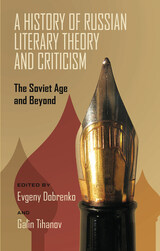 A History of Russian Literary Theory and Criticism: The Soviet Age and Beyond
Evgeny Dobrenko
University of Pittsburgh Press, 2013
This volume assembles the work of leading international scholars in a comprehensive history of Russian literary theory and criticism from 1917 to the post-Soviet age. By examining the dynamics of literary criticism and theory in three arenas—political, intellectual, and institutional—the authors capture the progression and structure of Russian literary criticism and its changing function and discourse.
The chapters follow early movements such as formalism, the Bakhtin Circle, Proletklut, futurism, the fellow-travelers, and the Russian Association of Proletarian Writers. By the cultural revolution of 1928, literary criticism became a mechanism of Soviet policies, synchronous with official ideology. The chapters follow theory and criticism into the 1930s with examinations of the Union of Soviet Writers, semantic paleontology, and socialist realism under Stalin. A more “humanized” literary criticism appeared during the ravaging years of World War II, only to be supplanted by a return to the party line, Soviet heroism, and anti-Semitism in the late Stalinist period. During Khrushchev’s Thaw, there was a remarkable rise in liberal literature and criticism, that was later refuted in the nationalist movement of the “long” 1970s. The same decade saw, on the other hand, the rise to prominence of semiotics and structuralism. Postmodernism and a strong revival of academic literary studies have shared the stage since the start of the post-Soviet era.
For the first time anywhere, this collection analyzes all of the important theorists and major critical movements during a tumultuous ideological period in Russian history, including developments in émigré literary theory and criticism.
A History of Russian Literature: From Its Beginnings to 1900
D.S. Mirsky
Northwestern University Press, 1999 Russian literature has always been inseparable from Russian history. D. S. Mirsky constantly keeps in mind the ever-colorful and ever-changing aspects of the one in discussing the other. Sound in judgment, luminescent, and exquisitely written, Mirsky's book is essential reading for anyone interested in one of the world's great literatures. A History of Russian Literature covers the beginning of Russian fiction, the Age of Classicism, the Age of Gogol, and the poets, journalists, novelists, and playwrights of the Age of Realism.
History Of Scandinavia: Norway, Sweden, Denmark, Finland, And Iceland
T.K. Derry
University of Minnesota Press, 2000 This concise account traces the history of the Scandinavian countries from earliest times to the present, emphasizing common features in their heritage and in their contribution to the modern world. The author’s aim is to describe each country’s history, traditions, and way of life and to examine the political development of the five nations in the context of the whole Nordic region.
 A History of Scandinavian Literature, 1870-1980
Sven Rossel
University of Minnesota Press, 1982
A History of Scandinavian Literature, 1870-1980 was first published in 1982. Minnesota Archive Editions uses digital technology to make long-unavailable books once again accessible, and are published unaltered from the original University of Minnesota Press editions.The decade of the 1870s marked a breakthrough in the literature of Denmark and Norway and, in the next decade, of Sweden, Finland, and Iceland. Until that time, these countries had to a large extent received literary and cultural impulses from abroad, but with the development of new realistic and naturalistic literary modes in the 1870s, they became a creative cultural area, one of the centers of world literature.Sven Rossel begins his literary history at this turning point. Instead of providing a complete survey, with its risks of superficiality, he focuses on a number of outstanding writers who are considered representative of literary periods, stylistic trends, or social groups. Among the authors whose work he considers are the Danish essayist Georg Brandes and novelist Isak Dinesen, Norwegians Henrik Ibsen, Knut Hamsun, and Ole E. Rølvaag, Swedes August Strindberg, Selma Lagerlöf, and Vilhelm Moberg, Minna Canth and Christer Kijlman of Finland, and the Icelandic novelist and poet, Halldór Kiljan Laxness. He does not, however, confine himself to authors well established in the non-Scandinavian world but gives attention also to talented writers who have – undeservedly – remained unrecognized even in their native lands.Rossel provides a social, cultural, and political context for his literary study and emphasizes the interrelationship among the five countries. In addition, he stresses reciprocal influences in world literature, devoting special attention to Anglo-American cross-currents. This book is for scholars, students, and general readers interested in the literary and cultural life of the Nordic countries or in comparative literature.
 A History of Scientific Journals: Publishing at the Royal Society, 1665–2015
Aileen Fyfe, Noah Moxham, Julie Mcdougall-Waters, and Camilla Mørk Røstvik
University College London, 2022 A comprehensive history of scientific publishing and its impact on scientific discourse.
Modern scientific research has changed significantly since the days of Isaac Newton, with professionalized, collaborative, and international networks that engage a more diverse community of researchers. Yet, the long history of scientific publishing reveals a deep mutual relationship between how academic discourse develops and what (and how) research is published. With unique insights from the Royal Society of London’s comprehensive archives spanning 350 years of scientific journal publishing, A History of Scientific Journals illustrates the entangled histories of scientific publishing and professional discourses. This volume provides insights into the editorial management, business practices, and financial difficulties of journals such as Philosophical Transactions, which was first published in 1665 and has published papers by Newton, Darwin, Dorothy Hodgkin, and Stephen Hawking. Highly illustrated with photographs of historic archived documents, including early publications and editorial annotations, this history extends to the present day and includes a look at digital journal publication and the open-access movement, making the book's publication through UCL Press both appropriate and symbiotic.
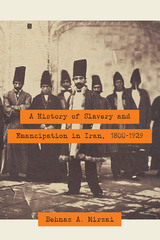 A History of Slavery and Emancipation in Iran, 1800-1929
By Behnaz A. Mirzai
University of Texas Press, 2017 Shortlisted for the 2018 Wallace K. Ferguson Prize, Canadian Historical Association
The leading authority on slavery and the African diaspora in modern Iran presents the first history of slavery in this key Middle Eastern country and shows how slavery helped to shape the nation’s unique character.
Slavery in the Middle East is a growing field of study, but the history of slavery in a key country, Iran, has never before been written. This history extends to Africa in the west and India in the east, to Russia and Turkmenistan in the north, and to the Arab states in the south. As the slave trade between Iran and these regions shifted over time, it transformed the nation and helped forge its unique culture and identity. Thus, a history of Iranian slavery is crucial to understanding the character of the modern nation. Drawing on extensive archival research in Iran, Tanzania, England, and France, as well as fieldwork and interviews in Iran, Behnaz A. Mirzai offers the first history of slavery in modern Iran from the early nineteenth century to emancipation in the mid-twentieth century. She investigates how foreign military incursion, frontier insecurity, political instability, and economic crisis altered the patterns of enslavement, as well as the ethnicity of the slaves themselves. Mirzai’s interdisciplinary analysis illuminates the complex issues surrounding the history of the slave trade and the process of emancipation in Iran, while also giving voice to social groups that have never been studied—enslaved Africans and Iranians. Her research builds a clear case that the trade in slaves was inexorably linked to the authority of the state. During periods of greater decentralization, slave trading increased, while periods of greater governmental autonomy saw more freedom and peace.
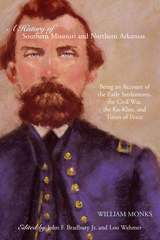 A History of Southern Missouri and Northern Arkansas: Being an Account of the Early Settlements, the Civil War, the Ku-Klux, and Times of Peace
William Monks
University of Arkansas Press, 2006 Originally published in 1907 and now reprinted for the first time, this is the only account published by a Union guerrilla in the border region of the central Ozarks, where political and civil violence lasted from the Civil War well into the 1880s. There were probably many people who wanted to shoot Billy Monks. He was a Union patriot and skilled guerrilla fighter to some, but others called him a bushwhacker, a murderer, and a thief. His was a very personal combat: he commanded, rallied, arrested, killed, quarreled with, and sued people he knew. His life provides a striking example of the cliché that the war did not end in 1865, but continued fiercely on several fronts for another decade as partisan factions settled old scores and battled for local political control. This memoir was Monks’s last salvo at his old foes, by turns self-defense and an uncompromising affirmation of the Radical Union cause in the Ozarks. The editors include a new biographical sketch of the author, fill in gaps in his narrative, identify all the people and places to which he refers, and offer a detailed index. Monks himself illustrated the volume with staged photographs of key events re-created by aged comrades who appear to have been just barely able to hoist the muskets they hold as props.
 A History of Southland College: The Society of Friends and Black Education in Arkansas
Thomas Kennedy
University of Arkansas Press, 2009 In 1864 Alida and Calvin Clark, two abolitionist members of the Religious Society of Friends from Indiana, went on a mission trip to Helena, Arkansas. The Clarks had come to render temporary relief to displaced war orphans but instead found a lifelong calling. During their time in Arkansas, they started the school that became Southland College, which was the first institution of higher education for blacks west of the Mississippi, and they set up the first predominately black monthly meeting of the Religious Society of Friends in North America. Their progressive racial vision was continued by a succession of midwestern Quakers willing to endure the primitive conditions and social isolation of their work and to overcome the persistent challenges of economic adversity, social strife, and natural disaster. Southland’s survival through six difficult and sometimes dangerous decades reflects both the continuing missionary zeal of the Clarks and their successors as well as the dedication of the black Arkansans who sought dignity and hope at a time when these were rare commodities for African Americans in Arkansas.
A History of Spanish Painting
Chandler Rathfon Post
Harvard University Press Continuing the discussion of the Hispano-Flemish movement in the painting of the Iberian peninsula initiated in Volume 4, the fifth volume of Professor Post’s monumental work takes up the manifestations of the movement in Andalusia. It therefore treats the schools of Seville and Cordova in the second half of the fifteenth century and becomes the most important volume yet published in the series, since the consideration of the Cordovan school involves the two greatest primitive painters Spain produced, Master Alfonso and Bermejo. The illustrations include reproductions of every one of Bermejo’s paintings and often of their details as well. The Appendix contains much material additional to the first four volumes.
 A History of Spanish Painting
Chandler Rathfon Post
Harvard University Press These volumes inaugurate a general history of Spanish painting that for the first time makes a synthesis of the developments in the different schools of the peninsula, correlates these developments with the evolution of the rest of European art, and treats the various tendencies and all the extant examples in detail. The work includes the pre-Romanesque and Romanesque periods, the Franco-Gothic and Italo-Gothic manners of the fourteenth century, and the “international style” of the first half of the fifteenth century, carrying the reader to about the year 1450 in preparation for subsequent volumes on the more extensively preserved painting of the later Quattrocento. Chandler Post brings to his task the results of many years of research and travel. Not the least of his duties has been the difficult problem of procuring photographs, but he has succeeded in gathering material that enables him to illustrate the volumes copiously and to devote to almost every monument one or two reproductions, which in many instances have never before been published.
 A History of Spanish Painting
Chandler Rathfon Post
Harvard University Press These volumes inaugurate a general history of Spanish painting that for the first time makes a synthesis of the developments in the different schools of the peninsula, correlates these developments with the evolution of the rest of European art, and treats the various tendencies and all the extant examples in detail. The work includes the pre-Romanesque and Romanesque periods, the Franco-Gothic and Italo-Gothic manners of the fourteenth century, and the “international style” of the first half of the fifteenth century, carrying the reader to about the year 1450 in preparation for subsequent volumes on the more extensively preserved painting of the later Quattrocento. Chandler Post brings to his task the results of many years of research and travel. Not the least of his duties has been the difficult problem of procuring photographs, but he has succeeded in gathering material that enables him to illustrate the volumes copiously and to devote to almost every monument one or two reproductions, which in many instances have never before been published.
A History of Spanish Painting, Volume IV
Chandler Rathfon Post
Harvard University Press Covering the story of Spanish art from the point where he left it at the beginning of the fifteenth century in his third volume, Professor Post devotes the present fourth volume to a consideration of the Hispano-Flemish period, particularly in Castile and Leon, which began with the union of those two kingdoms under Ferdinand and Isabella toward the end of the fifteenth century. Like the earlier volumes, this is very fully illustrated, with reproductions of masterpieces selected after personal investigation and study in Spain. It will take its place beside its predecessors as a welcome continuation of what will undoubtedly come to be considered the definitive history of painting in the Iberian peninsula.
A History of Spanish Painting, Volume VI
Chandler Rathfon Post
Harvard University Press Following the scheme he laid out in the beginning of this series, Professor Post arrives in the sixth volume of his history of Spanish painting at the School of Valencia in the late Middle Ages and early Renaissance. He makes the first comprehensive attempt to introduce order into the complicated development of the School at this period and to distinguish its various and successive masters and their work. In this connection he discusses some of the most distinguished and charming artists in primitive Spanish painting, such as Jacomart and Rodrigo de Osona the elder. Like the earlier volumes, this one is lavishly illustrated with reproductions of paintings, a large number of which are in remote villages and have never before been photographed.
 A History of Spanish Painting, Volume VII
Chandler Rathfon Post
Harvard University Press The seventh volume of Professor Post’s History of Spanish Painting treats the latest Gothic phases of the Catalan school in the middle and in the second half of the fifteenth century. For the first time the vast pictorial production of Catalonia during this period is ordered and classified, and many new personalities in the school are segregated and defined. The discussion brings Professor Post to one of the most thoroughly charming artists of the European Middle Ages, Jaime Huguet, to whom the longest chapter is devoted. The broad boundaries of the school involve also a treatment of contemporary painting in Majorca and Sardinia. The volume is the largest yet published in the series. The number of illustrations is also larger than that in any previous volume; there are almost four hundred, many of them unknown paintings recently discovered in the process of dismantling churches and private collections in the course of the Spanish civil war.
 A History of Spanish Painting, Volume VII
Chandler Rathfon Post
Harvard University Press The seventh volume of Chandler Post’s History of Spanish Painting treats the latest Gothic phases of the Catalan school in the middle and in the second half of the fifteenth century. For the first time the vast pictorial production of Catalonia during this period is ordered and classified, and many new personalities in the school are segregated and defined. The discussion brings Post to one of the most thoroughly charming artists of the European Middle Ages, Jaime Huguet, to whom the longest chapter is devoted. The broad boundaries of the school involve also a treatment of contemporary painting in Majorca and Sardinia. The volume is the largest yet published in the series. The number of illustrations is also larger than that in any previous volume; there are almost four hundred, many of them unknown paintings recently discovered in the process of dismantling churches and private collections in the course of the Spanish civil war.
The History of Special Education: From Isolation to Integration
Margret A. Winzer
Gallaudet University Press, 1993 This comprehensive volume examines the facts, characters, and events that shaped this field in Western Europe, Canada, and the United States. From the first efforts to teach disabled people in early Christian and Medieval eras to such current mandates as Public Law 94-142, this study breaks new ground in assessing the development of special education as a formal discipline. The History of Special Education presents a four-part narrative that traces its emergence in fascinating detail from 16th-century Spain through the Age of Enlightenment in 17th-century France and England to 18th-century issues in Europe and North America of placement, curriculum, and early intervention. The status of teachers in the 19th century and social trends and the movement toward integration in 20th century programs are considered as well.
 The History of Statistics: The Measurement of Uncertainty before 1900
Stephen M. Stigler
Harvard University Press, 1986 This magnificent book is the first comprehensive history of statistics from its beginnings around 1700 to its emergence as a distinct and mature discipline around 1900. Stephen M. Stigler shows how statistics arose from the interplay of mathematical concepts and the needs of several applied sciences including astronomy, geodesy, experimental psychology, genetics, and sociology. He addresses many intriguing questions: How did scientists learn to combine measurements made under different conditions? And how were they led to use probability theory to measure the accuracy of the result? Why were statistical methods used successfully in astronomy long before they began to play a significant role in the social sciences? How could the introduction of least squares predate the discovery of regression by more than eighty years? On what grounds can the major works of men such as Bernoulli, De Moivre, Bayes, Quetelet, and Lexis be considered partial failures, while those of Laplace, Galton, Edgeworth, Pearson, and Yule are counted as successes? How did Galton’s probability machine (the quincunx) provide him with the key to the major advance of the last half of the nineteenth century?
Stigler’s emphasis is upon how, when, and where the methods of probability theory were developed for measuring uncertainty in experimental and observational science, for reducing uncertainty, and as a conceptual framework for quantitative studies in the social sciences. He describes with care the scientific context in which the different methods evolved and identifies the problems (conceptual or mathematical) that retarded the growth of mathematical statistics and the conceptual developments that permitted major breakthroughs.
Statisticians, historians of science, and social and behavioral scientists will gain from this book a deeper understanding of the use of statistical methods and a better grasp of the promise and limitations of such techniques. The product of ten years of research, The History of Statistics will appeal to all who are interested in the humanistic study of science.
History of Structuralism: Volume 1: The Rising Sign, 1945-1966
Francois Dosse
University of Minnesota Press, 1998 The first comprehensive history of one of the most influential intellectual movements of the twentieth century. Structuralism has had a profound impact on disciplines ranging from literary theory to sociology, from anthropology to philosophy, from history to psychoanalysis. François Dosse tells the story of structuralism from its beginnings in postwar Paris to its culmination as a movement that would reconfigure French intellectual life and reverberate throughout the Western world. This first volume of his study, The Rising Sign, 1945–1966, cogently maps the dizzying array of personalities and ideas of the early structuralist movement, paving the way for later developments.
History of Telegraphy
Ken Beauchamp
The Institution of Engineering and Technology, 2001 A dominating theme of the 21st Century will be the transmission and processing of information as the global network of communication channels continues to develop. The emergence of today's digital communications technology owes much to the growth of telegraphy in the 19th and 20th Centuries. The realisation of cheap long-distance communication using telegraphy stimulated the initial design and development of coded transmissions that proved vital in both World Wars for use on land, sea, and in the air. Methods of data compaction, coding and encryption in modern communication systems all have their origins in the techniques used by the telegraph pioneers. In fact the two main phases of telegraph development - cable-based techniques that began in the early 19th Century and wireless transmission in the 20th Century - parallel the changes in voice and information communications seen recently.
 The History of Temple University Japan: An Experiment in International Education
Richard Joslyn and Bruce Stronach
Temple University Press, 2023 When Temple University Japan (TUJ) was founded in 1982—to advance the mission of international higher education—the university had few ties to Japan, or any other Asian country. However, more than 40 years later, TUJ has overcome substantial obstacles and remains the only American university campus in Japan, gaining legitimacy and considerable respect as an international institution of higher education. In The History of Temple University Japan, two former TUJ Deans, Richard Joslyn and Bruce Stronach, explore the creation, development, and maturation of TUJ, and present a case study of how Temple University successfully created an overseas branch campus.
The authors recount the development of the academic program, the recruitment of students, and the support from Temple that enabled curricular and pedagogical improvement.
They also address the university’s relationships with three Japanese partners, and the financial threats and crises TUJ faced over the decades.
The History of Temple University Japan is not only an important documentation of TUJ, but also a history of U.S.-Japanese relations. What emerges is the significant impact TUJ has had on the thousands of students, faculty, and staff who have been a part of this international academic institution.
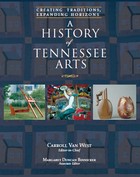 A History Of Tennessee Arts: Creating Traditions, Expanding Horizons
Carroll Van West
University of Tennessee Press, 2003
The harmonies of the Fisk Jubilee Singers, the measured brush strokes of painter Lloyd Branson, the intricate basket weaving of Maggie Murphy, the influence of the Agrarian literary movement, and the theater barnstorming of actor-manager Sol Smith—such are the sounds, images, and expressions of Tennessee’s arts legacy.
Through its interlocking themes of tradition and innovation, A History of Tennessee Arts: Creating Traditions, Expanding Horizons traces the story of the arts in Tennessee from its formal, more academic side to its vernacular expressions of culture, self, and community. Both the formal and the vernacular contribute to an understanding of what the arts mean to Tennesseans and, in turn, what Tennesseans have to offer the culture of the state, the region, and the nation. A history of the arts in the Volunteer State becomes, then, an evolving barometer of not only where we have been as a culture, but also how we have matured as a society.
This richly illustrated book, cosponsored by the Tennessee Arts Commission and the Tennessee Historical Society, covers the varieties of art in Tennessee in five parts. The visual arts and architecture section includes chapters on vernacular and high style architecture, sculpture, painting and photography, while the section on craft arts celebrates folk arts such as woodcraft, silversmithing, pottery, and textiles. The section on Tennessee’s rich literary history includes such writers as James Agee, Robert Penn Warren, and Evelyn Scott, while the performing arts are represented by a wealth of storytellers along with two centuries of stage history. Finally, Tennessee is home to—and originator of—much of the music that we know as distinctively American. Contributors to the music section examine gospel, blues, rock, soul, and, of course, country music.
From prehistoric cave paintings to the “cow punk” of Jason and the Scorchers, from the elegant capitol building of William Strickland to Ballet Memphis, and from the unique cantilevered barns of East Tennessee to the chronicles of Alex Haley, the arts in Tennessee truly celebrate traditions and strive to expand our horizons.
The Editor: Carroll Van West is director of the Center for Historic Preservation at Middle Tennessee State University and senior editor of the Tennessee Historical Quarterly.
 The History of Tense/Aspect/Mood/Voice in the Mayan Verbal Complex
By John S. Robertson
University of Texas Press, 1992 Mayan civilization, renowned for its mathematics, writing, architecture, religion, calendrics, and agriculture, fascinates scholars and a wide lay public as archaeology and glyphic decipherment reveal more of its secrets. In this pathfinding study of the Mayan language family, John S. Robertson explores major changes that have occurred in the core of Mayan grammar from the earliest, reconstructed ancestral language down through the colonial languages to the modern languages that are spoken today. Building on groundwork already laid in phonological studies and in the study of the pronominal system, Robertson's examination of tense/ aspect/ mood/voice is the next logical step in the general linguistic study of Mayan. Robertson offers careful consideration of all the major subgroups of Mayan, from Yucatecan to Quichean, as they are spoken today. He also draws extensively on colonial documents assembled by bilingual Spanish-Mayan speaking clerics. These documents provide a check on the accuracy of both the reconstructed ancient language, Common Mayan, and the theoretical evolution of the modern languages from this ancestor. The study will also be of value to students of the Maya glyphs, since it discusses the grammatical system that most probably underlies the glyphic representations. Beyond its obvious interest for Mayan linguistics, the study proposes a theory of language change that will be important for all students of comparative linguistics. Robertson's work sets forth the basic, universal assumptions that provide for an appropriate description of the grammatical systems of all languages. It will be a significant reference for future researchers.
 History of the 33d Iowa Infantry Volunteer Regiment, 1863–6
A.F. Sperry
University of Arkansas Press, 2002 Written and first published in 1866 soon after the author's discharge from the Union army, A. F. Sperry's History of the 33d Iowa Infantry is one of the classic regimental histories of the American Civil War. It is a fresh, honest, and detailed account of the regiment's movements and actions—in Kentucky, Mississippi, Alabama, Texas, and, most notably, Arkansas, where it played a conspicuous role in the Helena, Little Rock, and Camden campaigns. As the regiment's fife and drum major responsible for sounding the duty calls that regulated a soldier's day, Sperry was well situated to observe the inner workings of his unit. His perceptive narrative of army life on the march and in camp captures the courage, humor, and sufferings of the rank and file. Although he took pride in his regiment's accomplishments, he unflinchingly reveals the hard side of war with vivid depictions of looting, resistance to orders, and "extermination" of Confederate guerrillas. By itself, Sperry's memoir is remarkable and important. It is made even more valuable by the new introduction and detailed notes from the editors. Their meticulous annotations include quotes from the diaries, letters, and reminiscences of other soldiers, adding depth and detail to the account. Seven maps and thirty-seven never-before-published photographs of 33d Iowa personnel taken during the war further enrich the book. Civil War historians and reenactors everywhere will welcome this important new classic.
 A History of the Alans in the West: From Their First Appearance in the Sources of Classical Antiquity through the Early Middle Ages
Bernard S. Bachrach
University of Minnesota Press, 1973 A History of the Alans in the West was first published in 1973. Minnesota Archive Editions uses digital technology to make long-unavailable books once again accessible, and are published unaltered from the original University of Minnesota Press editions. The Alans, a nomadic people from the steppe lands of south Russia, were among the many invaders of the Roman empire who helped to bring about its fall. Unlike the majority of the invaders, they were not Germans — they were Indo-Iranians—and they were not, like most barbarians, organized in agricultural communities. This history traces their westward movement from the time of their first mention in sources of classical antiquity through the early Middle Ages. Professor Bachrach discusses the social and religious institutions of the Alans and especially their military customs. As he shows, they contributed much to the military repertoire of the West, especially the feigned retreat tactic and the role of the cavalry as the primary part of the army. In their westward movement the Alans were assimilated by people in Gaul and Italy and served the empire in a military capacity during the fourth and fifth centuries. IN addition to their military and political impact in several areas, the Alans also influenced early medieval artistic styles, literary developments, place names, and personal names. A number of illustrations provide examples of the artistic influence of the Alans, and there are maps pertinent to the history.
 History of the Alps, 1500 - 1900: Environment, Development, and Society
Jon Mathieu, translated by Matthew Vester
West Virginia University Press, 2009 In the 1700s, Jean-Jacques Rousseau celebrated the Alps as the quintessence of the triumph of nature over the “horrors” of civilization. Now available in English, History of the Alps, 1500-1900: Environment, Development, and Society provides a precise history of one of the greatest mountain range systems in the world. Jon Mathieu’s work disproves a number of commonly held notions about the Alps, positioning them as neither an inversion of lowland society nor a world apart with respect to Europe. Mathieu’s broad historical portrait addresses both the economic and sociopolitical—exploring the relationship between population levels, development, and the Alpine environment, as well as the complex links between agrarian structure, society, and the development of modern civilization. More detailed analysis examines the relationship between various agrarian structures and shifting political configurations, several aspects of family history between the late Middle Ages and the turn of the twentieth century, and exploration of the Savoy, Grisons, and Carinthia regions.
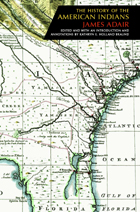 The History of the American Indians: A Critical Edition
James Adair; edited, introduced, and annotated by Kathryn E. Holland Braund
University of Alabama Press, 2009 A fully annotated edition of a classic work detailing the cultures of five southeastern American Indian tribes during the Contact Period James Adair was an Englishman who lived and traded among the southeastern Indians for more than 30 years, from 1735 to 1768. During that time he covered the territory from the Appalachian Mountains to the Mississippi River. He encountered and lived among Indians, advised governors, spent time with settlers, and worked tirelessly for the expansion of British interests against the French and the Spanish. Adair’s acceptance by the Creeks, Choctaws, Cherokees, and Chickasaws provided him the opportunity to record, compare, and analyze their cultures and traditions. Adair’s written work, first published in England in 1775, is considered one of the finest histories of the Native Americans. His observations provide one of the earliest and what many modern scholars regard as the best account of southeastern Indian cultures. This edition adheres to current standards of literary editing, following the original closely, and provides fully annotated and indexed critical apparatus.
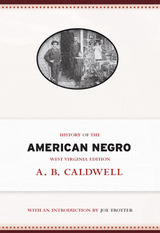 History of the American Negro: West Virginia Edition
A. B. Caldwell
West Virginia University Press, 2012 History of the American Negro: West Virginia Edition is a collection of biographies of African American men and women at the beginning of the twentieth century. Edited and published by A. B. Caldwell, the History of the American Negro collection includes seven volumes that richly describe the lives of citizens in Georgia, South Carolina, North Carolina, Virginia, Washington, DC, and West Virginia. In a statement printed in the first volume of this series, Caldwell wrote that his intent in publishing this collection was neither “comprehensive nor exhaustive,” yet he was determined to shed light on the “successful element unrecorded” of black Americans in the United States. As the 7th volume in Caldwell’s collection, History of the American Negro: West Virginia Edition chronicles the struggles and triumphs of everyday African Americans in West Virginia during the post−World War I era. A resource for genealogists, historians, and citizens alike, this history provides a detailed account of the often overlooked lives of ordinary men and women.
 History of the American Newspaper Publishers Association
Edwin Emery, Editor
University of Minnesota Press, 1950 History of the American Newspaper Publishers Association was first published in 1950. Minnesota Archive Editions uses digital technology to make long-unavailable books once again accessible, and are published unaltered from the original University of Minnesota Press editions. The dramatic story of the association that for sixty-three years has held a position of major importance in the development of our free press. For the first time the full story of the activities of this influential daily newspaper trade association is told by a scholar who was given access to the association's files of publications. The story of the ANPA is primarily one of the advancement of the business interests of daily newspapers and of resulting conflicts and adjustments with labor unions, communications competitors, advertisers, newsprint makers, and the government. The author analyzes these areas of activity and integrates the history of the ANPA with the economic, political, and social developments that have transformed America and its daily newspapers since 1887. Of major interest and importance is the discussion of the labor relations policy of the daily newspapers who are ANPA members. Other major topics include the association's opposition to federal legislation which the ANPA asserted imperiled the freedom of the press; the association's battles to eliminate tariff charges on newsprint and to maintain favorable postal rates; competition with radio, magazines, and other communications media; business problems of daily newspapers in the field of advertising; and mechanical developments which have revolutionized the printing industry.
A History of the American Theatre from Its Origins to 1832
William Dunalp, Introduction by Tice L. Miller
University of Illinois Press, 2005 As America passed from a mere venue for English plays into a country with its own nationally regarded playwrights, William Dunlap lived the life of a pioneer on the frontier of the fledgling American theatre, full of adventures, mishaps, and close calls. He adapted and translated plays for the American audience and wrote plays of his own as well, learning how theatres and theatre companies operated from the inside out. Dunlap's masterpiece, A History of American Theatre was the first of its kind, drawing on the author's own experiences. In it, he describes the development of theatre in New York, Philadelphia, and South Carolina as well as Congress's first attempts at theatrical censorship. Never before previously indexed, this edition also includes a new introduction by Tice L. Miller.
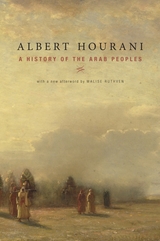 A History of the Arab Peoples: With a New Afterword
Albert Hourani
Harvard University Press, 2002 “Here at last is a genuinely readable, genuinely responsive history of the Arabs.”—Edward W. Said, Los Angeles Times Book Review
Upon its publication in 1991, Albert Hourani’s masterwork was hailed as the definitive story of Arab civilization, and became both a bestseller and an instant classic. In a panoramic view encompassing twelve centuries of Arab history and culture, Hourani brilliantly illuminated the people and events that have fundamentally shaped the Arab world.
Now this seminal book is available in an expanded second edition. Noted Islamic scholar Malise Ruthven brings the story up to date from the mid-1980s, including such events as the Gulf War; civil unrest in Algeria; the change of leadership in Syria, Morocco, and Jordan; and the aftermath of the events of September 11, 2001. The terrorist attacks in the United States, ongoing crisis in Iraq, and renewed violence between Israelis and Palestinians all underscore the need for a balanced and well-informed understanding of the Arab world, and make this insightful history of the Arab peoples more important than ever.
 History of the Armenians
Moses Khorenats'i
Harvard University Press, 1978 Moses Khorenats'i's History of the Armenians is the classic account of the origins and early history of the Armenian people. No work has been more influential in shaping the Armenians' view of their national past. Writing long after the events he describes, Moses recorded the legends and traditions of Armenia's heroes; putting them into a coherent order, he then integrated the history of Armenia into world history as known from Greek sources. Robert Thomson now translates the History into English for the first time and provides information the reader needs to interpret Moses' account.
This unique English text is translated from the nearly unobtainable critical edition published in Tiflis in 1913. Mr. Thomson's commentary establishes Moses' Greek, Armenian, and Syriac sources, showing how he used them, and points to bias and uncorroborated statements. His notes identify people and places, explain allusions, and give references to published scholarship on specific questions. In the introduction he discusses Moses' methods and purposes, and establishes the date of composition—a matter that has been hotly debated.
This volume will be welcome by everyone interested in Armenian literature, history, and traditions as well as by students of Near Eastern history and Christian literature.
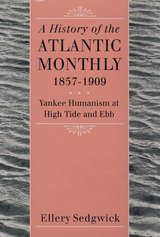 A History of the "Atlantic Monthly," 1857-1909: Yankee Humanism at High Tide and Ebb
Ellery Sedgwick
University of Massachusetts Press, 1994 From its founding in 1857 until its sale by Houghton Mifflin in 1908, the Atlantic Monthly was the most respected literary periodical in the United States. This study focuses on the magazine's first seven editors: James Russell Lowell, James T. Fields, William Dean Howells, Thomas Bailey Aldrich, Horace Scudder, Walter Hines Page, and Bliss Perry. Ellery Sedgwick examines their personalities, editorial policies, and literary tastes, and shows how each balanced his role as advocate of "high" culture with the demands of the literary marketplace and American democracy.
Although the Atlantic was rooted in the Yankee humanism of Boston, Cambridge, and Concord, its scope was national. Sedgwick points out that while the magazine spoke for high culture, its tradition was one of intellectual tolerance and of moderate liberalism on social and political issues. It supported abolition, women's rights, and religious tolerance, and published incisive criticism of unregulated industrial capitalism. The Atlantic also played an important role in the rise of American literary realism, and published early work not only by such authors as James, Jewett, and Howells, but also by Chesnutt, Du Bois, Cahan, and Zitkala-Sa.
History of the Bishops of Salona and Split
Thomas Spalatensis
Central European University Press, 2006 Ever since Thomas's Historia Salonitana was first published in 1666, it became a part of the corpus of European medieval literature. Thomas' aim was to write a history of the church of Split in order to prove that it was legally and justly the heir of the metropolitan rights of nearby Salona, an episcopal see from the 4th century. His reports on the fourth and the fifth crusade and on the Mongol invasion of 1241-2, are based on personal experience or on eyewitness reports. This is the 4th volume of the series of Central European Medieval Texts, Latin and English bilingual editions of major historical documents.
History of the Byzantine Empire, 324–1453, Volume I
Alexander A. Vasiliev
University of Wisconsin Press, 1958 “This is the revised English translation from the original work in Russian of the history of the Great Byzantine Empire. It is the most complete and thorough work on this subject. From it we get a wonderful panorama of the events and developments of the struggles of early Christianity, both western and eastern, with all of its remains of the wonderful productions of art, architecture, and learning.”—Southwestern Journal of Theology
History of the Byzantine Empire, 324–1453, Volume II
Alexander A. Vasiliev
University of Wisconsin Press, 1958 “This is the revised English translation from the original work in Russian of the history of the Great Byzantine Empire. It is the most complete and thorough work on this subject. From it we get a wonderful panorama of the events and developments of the struggles of early Christianity, both western and eastern, with all of its remains of the wonderful productions of art, architecture, and learning.”—Southwestern Journal of Theology
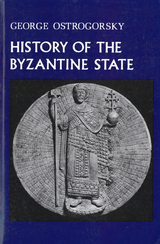 History of the Byzantine State
Ostrogorsky, George
Rutgers University Press, 1986 With clarity and logic, George Ostrogorsky succinctly traces the intricate thousand-year course of the Byzantine Empire. While his emphasis is on political development, he gives extensive consideration to social, esthetic, economic, and ecclesiastical factors as well. He also illuminates the Empire’s links with classical antiquity, as well as its effect on contemporaneous and subsequent European and Near Eastern history. The author captures the full sweep, the grandeur, and the tragic course of Byzantium’s rise and fall, backed by the scholarship and authority of a lifetime devoted to its study. Long recognized as the basic history of the Byzantine Empire, this masterful work incorporates the results of the vast expansion in Byzantine research in recent years. This edition has been completely retranslated by Professor Joan Hussey from the third German edition. The text and annotation have been expanded by over seventy pages, with more than double the number of illustrations, and additional reference tables and lists.
History of the Central Brooks Range: Gaunt Beauty, Tenuous Life
William E. Brown
University of Alaska Press, 2007 The History of the Central Brooks Range uses rare primary sources in order to provide a chronological examination and history of the Koyukuk region—including anthropological descriptions of the Native groups that make the Central Brooks Range and its surroundings their home. The history of early exploration, mining, and the Klondike all overflow into the story of the Koyukuk region and its rich cultural heritage, and William E. Brown provides a fascinating history of the extraordinary ways of survival employed by pioneers in this rugged northern land. Supplemented with detailed descriptions by Robert Marshall, The History of the Central Brooks Range is further enhanced by over 150 beautiful full-color illustrations—from early exploration to the creation of the Gates of the Arctic National Park—making this an essential volume for anyone interested in Alaska Native studies.
 History of the Chemical Laboratory of the University of Michigan, 1856-1916
Edward D. Campbell
University of Michigan Press, 1916 Edward D. Campbell had in mind two principal objects when compiling History of the Chemical Laboratory of the University of Michigan 1856–1916. The first was an attempt to give a condensed account of the development of chemistry, both pure and applied, at the University of Michigan, from the time this subject was first taught at the University to 1916. The second object was to preserve a permanent list of all those men who constituted the instructing staff in the Chemical Laboratory, together with the years of their service therein, and a list of the scientific papers and other articles that they published during the years of their official connection with the Laboratory.Chemistry was the first of the experimental sciences to be taught by the laboratory method, and the development of the science at the University of Michigan followed along lines similar to those followed by many of the European as well as American universities, although the lines of development at Michigan were influenced by local conditions and the individuality of the men constituting the teaching staff.
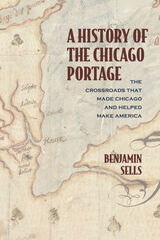 A History of the Chicago Portage: The Crossroads That Made Chicago and Helped Make America
Benjamin Sells
Northwestern University Press, 2021 Seven muddy miles transformed a region and a nation
This fascinating account explores the significance of the Chicago Portage, one of the most important—and neglected—sites in early US history. A seven-mile-long strip of marsh connecting the Chicago and Des Plaines Rivers, the portage was inhabited by the earliest indigenous people in the Midwest and served as a major trade route for Native American tribes. A link between the Mississippi River and the Atlantic Ocean, the Chicago Portage was a geopolitically significant resource that the French, British, and US governments jockeyed to control. Later, it became a template for some of the most significant waterways created in the nineteenth and twentieth centuries. The portage gave Chicago its name and spurred the city’s success—and is the reason why the metropolis is located in Illinois, not Wisconsin.
A History of the Chicago Portage: The Crossroads That Made Chicago and Helped Make America is the definitive story of a national landmark.
History of the Church
Rufinus of Aquileia
Catholic University of America Press, 2017 Rufinus of Aquileia's History of the Church, published in 402 or 403, is a translation and continuation of that of Eusebius of Caesarea. Eusebius's history tells the story of Christianity from its beginning down to the year 325; Rufinus carries the story forward to 395, the year of the death of Theodosius I. Rufinus demonstrates both a superb understanding of Eusebius's text and a tendency to translate it freely or even to misrepresent it when he judges that it does not do justice to the unity of faith and order which he is convinced is an essential element of the churchs constitution. He excises and rewrites passages liberally, but he retains in his translation Eusebius's revolutionary citation of sources, a historiographical method which would eventually prove so fruitful in the literature of the Latin church.
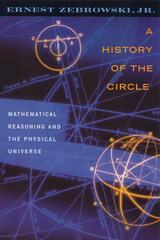 A History of the Circle: Mathematical Reasoning and the Physical Universe
Zebrowski, Ernest
Rutgers University Press, 2000 The concept of the circle is ubiquitous. It can be described mathematically, represented physically, and employed technologically. The circle is an elegant, abstract form that has been transformed by humans into tangible, practical forms to make our lives easier. And yet no one has ever discovered a true mathematical circle. Rainbows are fuzzy; car tires are flat on the bottom, and even the most precise roller bearings have measurable irregularities. Ernest Zebrowski, Jr., discusses why investigations of the circle have contributed enormously to our current knowledge of the physical universe. Beginning with the ancient mathematicians and culminating in twentieth-century theories of space and time, the mathematics of the circle has pointed many investigators in fruitful directions in their quests to unravel nature’s secrets. Johannes Kepler, for example, triggered a scientific revolution in 1609 when he challenged the conception of the earth’s circular motion around the sun. Arab and European builders instigated the golden age of mosque and cathedral building when they questioned the Roman structural arches that were limited to geometrical semicircles. Throughout his book, Zebrowski emphasizes the concepts underlying these mathematicians’ calculations, and how these concepts are linked to real-life examples. Substantiated by easy-to-follow mathematical reasoning and clear illustrations, this accessible book presents a novel and interesting discussion of the circle in technology, culture, history, and science.
A History of the City of Cairo, Illinois
John M. Lansden. Foreword by Clyde C. Walton
Southern Illinois University Press, 1976 Long out of print and much sought after bycollectors, Lansden’s classic 1910 history of Cairo remains valuable for the early history of the city. Its reprinting here, with a new Foreword by Clyde C. Walton, former Illinois State Historian, thus makes available again one of the finest examples of local history ever written, stressing as itdoes Cairo’s important relations with its area and with the country—in Lansden’s words, “this part of the Valley of the Mississippi—this Illinois Country.”
The History Of The Comstock Lode
Grant H. Smith
University of Nevada Press, 1998 No aspect of Nevada's history has captured so much attention as the heady boomtown days of the Comstock Lode strike in the mid-nineteenth century. The History of the Comstock Lode, first published in 1943, provided mining investors, engineers, and western historians with the first comprehensive, chronological history of mining operations on the Comstock from 1850 to 1997. Grant H. Smith labored on this project for over a decade to produce a volume that has become a classic in its field and a mainstay in all mining history collections. Of particular note is Smith's progressive record of the ways the mines were developed, the failures encountered, the bonanzas discovered, and the production of the mines. New edition co-published with the Nevada Bureau of Mines and Geology.
A History of the Crusades, Volume I: The First Hundred Years
Series Edited by Kenneth M. Setton; Volume Edited by Marshall W. Baldwin
University of Wisconsin Press, 1969 The six volumes of A History of the Crusades will stand as the definitive history of the Crusades, spanning five centuries, encompassing Jewish, Moslem, and Christian perspectives, and containing a wealth of information and analysis of the history, politics, economics, and culture of the medieval world.
A History of the Crusades, Volume II: The Later Crusades, 1189-1311
Series Edited by Kenneth M. Setton; Volume Edited by Wolff and Hazard
University of Wisconsin Press, 1969 The six volumes of A History of the Crusades will stand as the definitive history of the Crusades, spanning five centuries, encompassing Jewish, Moslem, and Christian perspectives, and containing a wealth of information and analysis of the history, politics, economics, and culture of the medieval world.
A History of the Crusades, Volume III: The Fourteenth and Fifteenth Centuries
Series Edited by Kenneth M. Setton; Volume Edited by Harry W. Hazard
University of Wisconsin Press, 1975 The six volumes of A History of the Crusades will stand as the definitive history of the Crusades, spanning five centuries, encompassing Jewish, Moslem, and Christian perspectives, and containing a wealth of information and analysis of the history, politics, economics, and culture of the medieval world.
A History of the Crusades, Volume IV: The Art and Architecture of the Crusader States
Series Edited by Kenneth M. Setton, Volume Edited by Harry W. Hazard
University of Wisconsin Press, 1977 The six volumes of A History of the Crusades will stand as the definitive history of the Crusades, spanning five centuries, encompassing Jewish, Moslem, and Christian perspectives, and containing a wealth of information and analysis of the history, politics, economics, and culture of the medieval world.
A History of the Crusades, Volume V: The Impact of the Crusades on the Near East
Series Edited by Kenneth M. Setton, Volume Edited by Zacour and Hazard
University of Wisconsin Press, 1985 The six volumes of A History of the Crusades will stand as the definitive history of the Crusades, spanning five centuries, encompassing Jewish, Moslem, and Christian perspectives, and containing a wealth of information and analysis of the history, politics, economics, and culture of the medieval world.
A History of the Crusades, Volume VI: The Impact of the Crusades on Europe
Series Edited by Kenneth M. Setton, Volume Edited by Hazard and Zacour
University of Wisconsin Press, 1990 The six volumes of A History of the Crusades will stand as the definitive history of the Crusades, spanning five centuries, encompassing Jewish, Moslem, and Christian perspectives, and containing a wealth of information and analysis of the history, politics, economics, and culture of the medieval world.
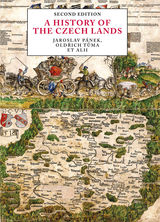 A History of the Czech Lands: Second Edition
Edited by Jaroslav Pánek, Oldrich Tuma, et al
Karolinum Press, 2016 Though the Czech Republic is a young nation, the areas within and just outside its modern borders boast an ancient and intricate past. A History of the Czech Lands provides one of the most complete historical accounts of this region to date. This history begins in the Neolithic era and follows the development of the state as it transformed into the Kingdom of Bohemia during the ninth century, into Czechoslovakia after World War I, and finally into the Czech Republic. Such a tumultuous political past arises in part from a fascinating native people, and A History of the Czech Lands profiles the Czechs in great detail, delving into past and present traditions and explaining how generation after generation adapted to a perpetually changing government and economy. In addition, the authors examine the many minorities that now call these lands home—Jews, Slovaks, Poles, Germans, Ukrainians, and others—and how each group’s migration to the region contributed to life in the Czech Republic today.
The second edition includes sixty new photographs and a new chapter detailing the transformation of this post-communist country into a member of the European Union. The only study in English of this scope and ambition, A History of the Czech Lands is essential for scholars of Slavic, Central, and East European studies and a must-read for those who trace their ancestry to these lands.
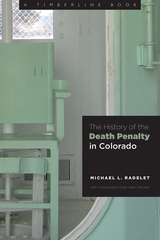 The History of the Death Penalty in Colorado
Michael Radelet
University Press of Colorado, 2017 In The History of the Death Penalty in Colorado, noted death penalty scholar Michael Radelet chronicles the details of each capital punishment trial and execution that has taken place in Colorado since 1859. The book describes the debates and struggles that Coloradans have had over the use of the death penalty, placing the cases of the 103 men whose sentences were carried out and 100 more who were never executed into the context of a gradual worldwide trend away from this form of punishment. For more than 150 years, Coloradans have been deeply divided about the death penalty, with regular questions about whether it should be expanded, restricted, or eliminated. It has twice been abolished, but both times state lawmakers reinstated the contentious punitive measure. Prison administrators have contributed to this debate, with some refusing to participate in executions and some lending their voices to abolition efforts. Colorado has also had a rich history of experimenting with execution methods, first hanging prisoners in public and then, starting in 1890, using the "twitch-up gallows" for four decades. In 1933, Colorado began using a gas chamber and eventually moved to lethal injection in the 1990s. Based on meticulous archival research in official state archives, library records, and multimedia sources, The History of the Death Penalty in Colorado, will inform the conversation on both sides of the issue anywhere the future of the death penalty is under debate.
 The History of the Devil
Vilém Flusser
University of Minnesota Press, 2014
In 1939, a young Vilém Flusser faced the Nazi invasion of his hometown of Prague. He escaped with his wife to Brazil, taking with him only two books: a small Jewish prayer book and Goethe’s Faust. Twenty-six years later, in 1965, Flusser would publish The History of the Devil, and it is the essence of those two books that haunts his own. From that time his life as a philosopher was born. While Flusser would later garner attention in Europe and elsewhere as a thinker of media culture, The History of the Devil is considered by many to be his first significant work, containing nascent forms of the main themes that would come to preoccupy him over the following decades.
In The History of the Devil, Flusser frames the human situation from a pseudo-religious point of view. The phenomenal world, or “reality” in a general sense, is identified as the “Devil,” and that which transcends phenomena, or the philosophers’ and theologians’ “reality,” is identified as “God.” Referencing Wittgenstein’s Tractatus Logico-Philosophicus in its structure, Flusser provocatively leads the reader through an existential exploration of nothingness as the bedrock of reality, where “phenomenon” and “transcendence,” “Devil” and “God” become fused and confused. So radically confused, in fact, that Flusser suggests we abandon the quotation marks from the terms “Devil” and “God.” At this moment of abysmal confusion, we must make the existential decisions that give direction to our lives.
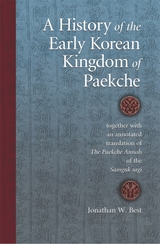 A History of the Early Korean Kingdom of Paekche, together with an annotated translation of The Paekche Annals of the Samguk sagi
Jonathan W. Best
Harvard University Press, 2006 This volume presents two histories of the early Korean kingdom of Paekche (trad. 18 BCE–660 CE). The first, written by Jonathan Best, is based largely on primary sources, both written and archaeological. This initial history of Paekche serves, in part, to introduce the second, an extensively annotated translation of the oldest history of the kingdom, the Paekche Annals (Paekche pon’gi). Written in the chronicle format standard for the traditional official histories of East Asia, the Paekche Annals constitutes one section of the Histories of the Three Kingdoms (Samguk sagi), a comprehensive account of early Korean history compiled under the editorial direction of Kim Pusik (1075–1151). Although these two representations of Paekche history differ markedly, the underlying problem faced by both the twelfth-century and the twenty-first-century historian is essentially the same: fashioning a responsible, encompassing, and reasonably coherent history of the kingdom from meager, and often disparate and fragmentary, evidence.
Included in the volume are 22 appendixes on problems in Paekche history; a concordance of proper names, official titles, omens, and weights and measures; a glossary of geographical names; and six historical maps of the kingdom showing its changing boundaries.
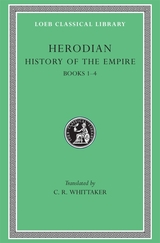 History of the Empire, Volume I: Books 1–4
Herodian
Harvard University Press A chronicle of Rome in crisis.
The History of Herodian (born ca. AD 178–179) covers a period of the Roman empire from the death of the emperor Marcus Aurelius (AD 180) to the accession of Gordian III (238), half a century of turbulence, in which we can see the onset of the revolution which, in the words of Gibbon, “will ever be remembered, and is still felt by the nations of the earth.” In these years, a succession of frontier crises and a disastrous lack of economic planning established a pattern of military coups and increasing cultural pluralism.
Of this revolutionary epoch we know all too little. The selection of chance has destroyed all but a handful of the literary sources that deal with the immediate post-Antonine scene. Herodian’s work is one of the few that have survived, and it has come down to us completely intact. Of the author we know virtually nothing, except that he served in some official capacity in the empire of which he wrote. His History was apparently produced for the benefit of people in the Greek-speaking half of the Roman empire. It betrays the faults of an age when truth was distorted by rhetoric and stereotypes were a substitute for sound reason. But it is an essential document for any who would try to understand the nature of the Roman empire in an era of rapidly changing social and political institutions.
The Loeb Classical Library edition of Herodian is in two volumes.
 History of the Empire, Volume II: Books 5–8
Herodian
Harvard University Press, 1969 A chronicle of Rome in crisis.
The History of Herodian (born ca. AD 178–179) covers a period of the Roman empire from the death of the emperor Marcus Aurelius (AD 180) to the accession of Gordian III (238), half a century of turbulence, in which we can see the onset of the revolution which, in the words of Gibbon, “will ever be remembered, and is still felt by the nations of the earth.” In these years, a succession of frontier crises and a disastrous lack of economic planning established a pattern of military coups and increasing cultural pluralism.
Of this revolutionary epoch we know all too little. The selection of chance has destroyed all but a handful of the literary sources that deal with the immediate post-Antonine scene. Herodian’s work is one of the few that have survived, and it has come down to us completely intact. Of the author we know virtually nothing, except that he served in some official capacity in the empire of which he wrote. His History was apparently produced for the benefit of people in the Greek-speaking half of the Roman empire. It betrays the faults of an age when truth was distorted by rhetoric and stereotypes were a substitute for sound reason. But it is an essential document for any who would try to understand the nature of the Roman empire in an era of rapidly changing social and political institutions.
The Loeb Classical Library edition of Herodian is in two volumes.
 A History of the Family
André Burguière
Harvard University Press, 1996 As old as the prehistoric bones jumbled in caves, as new as the latest union consummated in a test tube, the family in one form or another is at the heart of every society. Our most common institution, it is also the source of some of the world's most compelling and persistent questions, touching the very quick of history, anthropology, psychology, and sociology. A History of the Family is the first work to address all these aspects of the family over time and across the earth--to search out what the family means in its most particular and universal senses.
This monumental work in two volumes brings together experts from every discipline to show what the study of each epoch has to tell us about the family. Why is the family universal and yet so different in its various cultural manifestations? What notions of kinship regulate it, and how do these develop and change?
Françoise Zonabend's anthropological perspective on these questions, leading off Volume I, surveys familial terms and arrangements from familiar patrilinear models to matrilinear societies in Sumatra and Ghana to polyandry among the Nayar and the Toda of India. The following essays, which move from prehistory to antiquity to the middle ages, trace the evolution of the family from primate behavior to codified practices--in Sumer and Babylon and ancient Rome, in feudal Europe and medieval Byzantium, in China and Japan and Arab Islam--and relate these developments to religious, economic, and governmental concerns from land ownership to dynastic control and the maintenance of public order.
 A History of the Family
André Burguière
Harvard University Press, 1996 This monumental work in two volumes brings together experts from every discipline to show what the study of each epoch has to tell us about the family. Why is the family universal and yet so different in its various cultural manifestations? What notions of kinship regulate it, and how do these develop and change?
The shock of modernity shapes the story in Volume II, as the authors explore the impact of the industrial revolution, socialism, and contemporary practices from birth control to the widespread employment of women on the forms and norms of the family. This volume ranges from the changing influence of church and state on marriage and inheritance in early modern Europe to the demographic catastrophe wrought by the Spanish conquest in Mesoamerica; from the redefinition of family during the Chinese Revolution to the organization of nation and business along family lines in Japan since the Meiji Restoration; from the effects of British colonial policy and nationalistic reform on the family in India to the interplay of urbanization and the spread of Islam in new family codes in black Africa. The result is a complex, encyclopedic picture of the family confronting vast changes in politics, economics, and technology, adapting freely or perforce and yet fiercely maintaining the diversity that has marked it from the beginning of time.
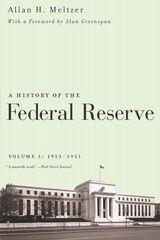 A History of the Federal Reserve, Volume 1: 1913-1951
Allan H. Meltzer
University of Chicago Press, 2002 Allan H. Meltzer's monumental history of the Federal Reserve System tells the story of one of America's most influential but least understood public institutions. This first volume covers the period from the Federal Reserve's founding in 1913 through the Treasury-Federal Reserve Accord of 1951, which marked the beginning of a larger and greatly changed institution.
To understand why the Federal Reserve acted as it did at key points in its history, Meltzer draws on meeting minutes, correspondence, and other internal documents (many made public only during the 1970s) to trace the reasoning behind its policy decisions. He explains, for instance, why the Federal Reserve remained passive throughout most of the economic decline that led to the Great Depression, and how the Board's actions helped to produce the deep recession of 1937 and 1938. He also highlights the impact on the institution of individuals such as Benjamin Strong, governor of the Federal Reserve Bank of New York in the 1920s, who played a key role in the adoption of a more active monetary policy by the Federal Reserve. Meltzer also examines the influence the Federal Reserve has had on international affairs, from attempts to build a new international financial system in the 1920s to the Bretton Woods Agreement of 1944 that established the International Monetary Fund and the World Bank, and the failure of the London Economic Conference of 1933.
Written by one of the world's leading economists, this magisterial biography of the Federal Reserve and the people who helped shape it will interest economists, central bankers, historians, political scientists, policymakers, and anyone seeking a deep understanding of the institution that controls America's purse strings.
"It was 'an unprecedented orgy of extravagance, a mania for speculation, overextended business in nearly all lines and in every section of the country.' An Alan Greenspan rumination about the irrational exuberance of the late 1990s? Try the 1920 annual report of the board of governors of the Federal Reserve. . . . To understand why the Fed acted as it did—at these critical moments and many others—would require years of study, poring over letters, the minutes of meetings and internal Fed documents. Such a task would naturally deter most scholars of economic history but not, thank goodness, Allan Meltzer."—Wall Street Journal
"A seminal work that anyone interested in the inner workings of the U. S. central bank should read. A work that scholars will mine for years to come."—John M. Berry, Washington Post
"An exceptionally clear story about why, as the ideas that actually informed policy evolved, things sometimes went well and sometimes went badly. . . . One can only hope that we do not have to wait too long for the second installment."—David Laidler, Journal of Economic Literature
"A thorough narrative history of a high order. Meltzer's analysis is persuasive and acute. His work will stand for a generation as the benchmark history of the world's most powerful economic institution. It is an impressive, even awe-inspiring achievement."—Sir Howard Davies, Times Higher Education Supplement
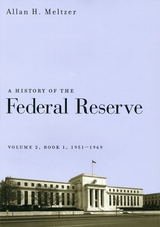 A History of the Federal Reserve, Volume 2, Book 1, 1951-1969
Allan H. Meltzer
University of Chicago Press, 2009 Allan H. Meltzer’s critically acclaimed history of the Federal Reserve is the most ambitious, most intensive, and most revealing investigation of the subject ever conducted. Its first volume, published to widespread critical acclaim in 2003, spanned the period from the institution’s founding in 1913 to the restoration of its independence in 1951. This two-part second volume of the history chronicles the evolution and development of this institution from the Treasury–Federal Reserve accord in 1951 to the mid-1980s, when the great inflation ended. It reveals the inner workings of the Fed during a period of rapid and extensive change. An epilogue discusses the role of the Fed in resolving our current economic crisis and the needed reforms of the financial system. In rich detail, drawing on the Federal Reserve’s own documents, Meltzer traces the relation between its decisions and economic and monetary theory, its experience as an institution independent of politics, and its role in tempering inflation. He explains, for example, how the Federal Reserve’s independence was often compromised by the active policy-making roles of Congress, the Treasury Department, different presidents, and even White House staff, who often pressured the bank to take a short-term view of its responsibilities. With an eye on the present, Meltzer also offers solutions for improving the Federal Reserve, arguing that as a regulator of financial firms and lender of last resort, it should focus more attention on incentives for reform, medium-term consequences, and rule-like behavior for mitigating financial crises. Less attention should be paid, he contends, to command and control of the markets and the noise of quarterly data. At a time when the United States finds itself in an unprecedented financial crisis, Meltzer’s fascinating history will be the source of record for scholars and policy makers navigating an uncertain economic future.
 A History of the Federal Reserve, Volume 2, Book 2, 1970-1986
Allan H. Meltzer
University of Chicago Press, 2009 Allan H. Meltzer’s critically acclaimed history of the Federal Reserve is the most ambitious, most intensive, and most revealing investigation of the subject ever conducted. Its first volume, published to widespread critical acclaim in 2003, spanned the period from the institution’s founding in 1913 to the restoration of its independence in 1951. This two-part second volume of the history chronicles the evolution and development of this institution from the Treasury–Federal Reserve accord in 1951 to the mid-1980s, when the great inflation ended. It reveals the inner workings of the Fed during a period of rapid and extensive change. An epilogue discusses the role of the Fed in resolving our current economic crisis and the needed reforms of the financial system. In rich detail, drawing on the Federal Reserve’s own documents, Meltzer traces the relation between its decisions and economic and monetary theory, its experience as an institution independent of politics, and its role in tempering inflation. He explains, for example, how the Federal Reserve’s independence was often compromised by the active policy-making roles of Congress, the Treasury Department, different presidents, and even White House staff, who often pressured the bank to take a short-term view of its responsibilities. With an eye on the present, Meltzer also offers solutions for improving the Federal Reserve, arguing that as a regulator of financial firms and lender of last resort, it should focus more attention on incentives for reform, medium-term consequences, and rule-like behavior for mitigating financial crises. Less attention should be paid, he contends, to command and control of the markets and the noise of quarterly data. At a time when the United States finds itself in an unprecedented financial crisis, Meltzer’s fascinating history will be the source of record for scholars and policy makers navigating an uncertain economic future.
History of the Florentine People
Leonardo BruniEdited and translated by James Hankins
Harvard University Press, 2001 Leonardo Bruni (1370-1444), the leading civic humanist of the Italian Renaissance, served as apostolic secretary to four popes (1405-1414) and chancellor of Florence (1427-1444). He was famous in his day as a translator, orator, and historian, and was the best-selling author of the fifteenth century. Bruni's History of the Florentine People in twelve books is generally considered the first modern work of history, and was widely imitated by humanist historians for two centuries after its official publication by the Florentine Signoria in 1442. This edition makes it available for the first time in English translation.
History of the Florentine People
Leonardo BruniEdited and translated by James Hankinswith D. J. W. Bradley
Harvard University Press, 2001 Leonardo Bruni (1370-1444), the leading civic humanist of the Italian Renaissance, served as apostolic secretary to four popes (1405-1414) and chancellor of Florence (1427-1444). He was famous in his day as a translator, orator, and historian, and was the best-selling author of the fifteenth century. Bruni's History of the Florentine People in twelve books is generally considered the first modern work of history, and was widely imitated by humanist historians for two centuries after its official publication by the Florentine Signoria in 1442.
This third volume concludes the edition, the first to make the work available in English translation. It includes Bruni's Memoirs, an autobiographical account of the events of his lifetime, and cumulative indexes to the complete History.
History of the Florentine People
Leonardo BruniEdited and translated by James Hankins
Harvard University Press, 2001 Leonardo Bruni (1370-1444), the leading civic humanist of the Italian Renaissance, served as apostolic secretary to four popes (1405-1414) and chancellor of Florence (1427-1444). He was famous in his day as a translator, orator, and historian, and was the best-selling author of the fifteenth century. Bruni's History of the Florentine People in twelve books is generally considered the first modern work of history, and was widely imitated by humanist historians for two centuries after its official publication by the Florentine Signoria in 1442. This edition makes it available for the first time in English translation.
 A history of the French in London: liberty, equality, opportunity
Volume editor Debra Kelly and Martyn Cornick
University of London Press, 2013 This book examines, for the first time, the history of the social, cultural, political and economic presence of the French in London, and explores the multiple ways in which this presence has contributed to the life of the city. The capital has often provided a place of refuge, from the Huguenots in the 17th century, through the period of the French Revolution, to various exile communities during the 19th century, and on to the Free French in the Second World War.It also considers the generation of French citizens who settled in post-war London, and goes on to provide insights into the contemporary French presence by assessing the motives and lives of French people seeking new opportunities in the late 20th and early 21st centuries. It analyses the impact that the French have had historically, and continue to have, on London life in the arts, gastronomy, business, industry and education, manifest in diverse places and institutions from the religious to the political via the educational, to the commercial and creative industries.
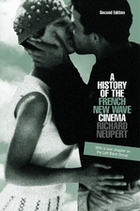 A History of the French New Wave Cinema
Richard Neupert
University of Wisconsin Press, 2007 The French New Wave cinema is arguably the most fascinating of all film movements, famous for its exuberance, daring, and avant-garde techniques. A History of the French New Wave Cinema offers a fresh look at the social, economic, and aesthetic mechanisms that shaped French film in the 1950s, as well as detailed studies of the most important New Wave movies of the late 1950s and early 1960s.
Richard Neupert first tracks the precursors to New Wave cinema, showing how they provided blueprints for those who would follow. He then demonstrates that it was a core group of critics-turned-directors from the magazine Cahiers du Cinéma—especially François Truffaut, Claude Chabrol, and Jean-Luc Godard—who really revealed that filmmaking was changing forever. Later, their cohorts Eric Rohmer, Jacques Rivette, Jacques Doniol-Valcroze, and Pierre Kast continued in their own unique ways to expand the range and depth of the New Wave.
In an exciting new chapter, Neupert explores the subgroup of French film practice known as the Left Bank Group, which included directors such as Alain Resnais and Agnès Varda. With the addition of this new material and an updated conclusion, Neupert presents a comprehensive review of the stunning variety of movies to come out of this important era in filmmaking.
The History of the Fujiwara House: A Study and Annotated Translation of the Toshi Kaden
Mikaël Bauer
Amsterdam University Press, 2020 With the addition of a contextualized introduction, here is the first annotated translation of the eighth- century clan history T?shi Kaden or the History of the Fujiwara House. Hitherto, scholars have focused on the more famous eighth-century imperial histories Nihon Shoki and Kojiki, but other sources such as the History of the Fujiwara House provide a narrative that complements or deviates from the official histories. The book was written to provide students and researchers with additional material to reconsider the political and intellectual currents of seventh- and eighth-century Japan and, in addition, reveal further insight into the career and motivations of its controversial author, the courtier Fujiwara no Nakamaro.
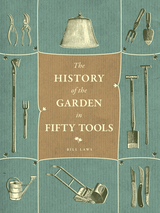 A History of the Garden in Fifty Tools
Bill Laws
University of Chicago Press, 2014 A green thumb is not the only tool one needs to garden well—at least that’s what the makers of gardening catalogs and the designers of the dizzying aisle displays in lawn- and-garden stores would have us believe. Need to plant a bulb, aerate some soil, or keep out a hungry critter? Well, there’s a specific tool for almost everything. But this isn’t just a product of today’s consumer era, since the very earliest gardens, people have been developing tools to make planting and harvesting more efficient and to make flora more beautiful and trees more fruitful. In A History of the Garden in Fifty Tools, Bill Laws offers entertaining and colorful anecdotes of implements that have shaped our gardening experience since the beginning.
As Laws reveals, gardening tools have coevolved with human society, and the story of these fifty individual tools presents an innovative history of humans and the garden over time. Laws takes us back to the Neolithic age, when the microlith, the first “all-in-one” tool was invented. Consisting of a small sharp stone blade that was set into a handle made of wood, bone, or antler, it was a small spade that could be used to dig, clip, and cut plant material. We find out that wheelbarrows originated in China in the second century BC, and their basic form has not changed much since. He also describes how early images of a pruning knife appear in Roman art, in the form of a scythe that could cut through herbs, vegetables, fruits, and nuts and was believed to be able to tell the gardener when and what to harvest.
Organized into five thematic chapters relating to different types of gardens: the flower garden, the kitchen garden, the orchard, the lawn, and ornamental gardens, the book includes a mix of horticulture and history, in addition to stories featuring well-known characters—we learn about Henry David Thoreau’s favorite hoe, for example. A History of the Garden in Fifty Tools will be a beautiful gift for any home gardener and a reassuring reminder that gardeners have always struggled with the same quandaries.
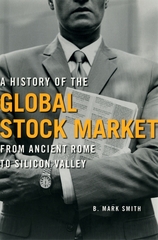 A History of the Global Stock Market: From Ancient Rome to Silicon Valley
B. Mark Smith
University of Chicago Press, 2004 The stock market is central to the global economy. Tens of millions of people look to it to provide for a comfortable retirement. Central bankers watch it closely as they set monetary policy. Businesses around the world are forced to adjust the way they operate to meet the demands of equity investors. Yet very little has been written about how the modern global stock market came to be. In A History of the Global Stock Market, B. Mark Smith weaves an entertaining tale that ranges from medieval trading companies and nineteenth-century robber barons to modern theorists and international speculators. Here, Smith debunks the popular myth that the market is inevitably subject to recurring speculative bubbles and discredits the notion that the current "globalization" of the market is something radically different from what has occurred in the past.
Informative, entertaining, and written for specialists and non-specialists alike, A History of the Global Stock Market is a worthy read for anyone who wants to understand the role of the stock market in the global economy.
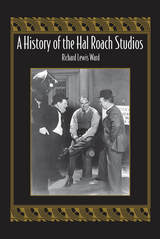 A History of the Hal Roach Studios
Richard Lewis Ward
Southern Illinois University Press, 2006 Once labeled the “lot that laugher built,” the Hal Roach Studios launched the comedic careers of such screen icons as Harold Lloyd, Our Gang, and Laurel and Hardy. With this stable of stars, the Roach enterprise operated for forty-six years on the fringes of the Hollywood studio system during a golden age of cinema and gained notoriety as a producer of short comedies, independent features, and weekly television series. Many of its productions are better remembered today than those by its larger contemporaries. In A History of the Hal Roach Studios, Richard Lewis Ward meticulously follows the timeline of the company’s existence from its humble inception in 1914 to its close in 1960 and, through both its obscure and famous productions, traces its resilience to larger trends in the entertainment business.
In the first few decades of the twentieth century, the motion picture industry was controlled by an elite handful of powerful firms that allowed very little room for new competition outside of their established cartel. The few independents that garnered some measure of success despite their outsider status usually did so by specializing in underserved or ignored niche markets. Here, Ward chronicles how the Roach Studios, at the mercy of exclusive distribution practices, managed to repeatedly redefine itself in order to survive for nearly a half-century in a cutthroat environment.
Hal Roach’s tactic was to nurture talent rather than exhaust it, and his star players spent the prime of their careers shooting productions on his lot. Even during periods of decline or misdirection, the Roach Studios turned out genuinely original material, such as the screwball classic Topper (1937), the brutally frank Of Mice and Men (1940), and the silent experiment One Million B.C. (1940). Ward’s exploration yields insight into the production and marketing strategies of an organization on the periphery of the theatrical film industry and calls attention to the interconnected nature of the studio system during the classic era. The volume also looks to the early days of television when the prolific Roach Studios embraced the new medium to become, for a time, the premier telefilm producer.
Aided by a comprehensive filmography and twenty-seven illustrations, A History of the Hal Roach Studios recounts an overlooked chapter in American cinema, not only detailing the business operations of Roach’s productions but also exposing the intricate workings of Hollywood’s rivalrous moviemaking establishment.
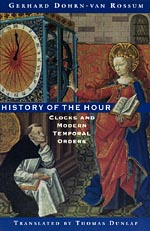 History of the Hour: Clocks and Modern Temporal Orders
Gerhard Dohrn-van Rossum
University of Chicago Press, 1996 In this sweeping study of the organization of time, Dohrn-van Rossum offers fresh insight into the history of the mechanical clock and its influence on European society from the late Middle Ages to the industrial revolution. Detailing the clock's effects on social activity, he presents a vivid picture of a society regulated by the precise measurement of identical hours.
"In tracing the evolution of time consciousness with scholarship and skill . . . Dohrn-van Rossum evokes the many ways that the small moments of life have come to be reckoned with the passage of time."—Dava Sobel, Civilization
"Dohrn-van Rossum paints a highly nuanced picture of time's conquest of modern life."—Steven Lagerfeld, Wilson Quarterly
"This book is definitive in showing the clock's pervasive influence over European society."—Virginia Quarterly Review
"[A] delightful, excellently translated history."—Choice
"Dohrn-van Rossum has produced a persuasive and brilliantly documented new understanding of how modern time-consciousness arose."—Owen Gingerich, Nature
History of the Inca Empire: An Account of the Indians' Customs and Their Origin, Together with a Treatise on Inca Legends, History, and Social Institutions
By Bernabe Cobo
University of Texas Press, 1979 The Historia del Nuevo Mundo, set down by Father Bernabe Cobo during the first half of the seventeenth century, represents a singulary valuable source on Inca culture. Working directly frorn the original document, Roland Hamilton has translated that part of Cobo's massive manuscripts that focuses on the history of the kingdom of Peru. The volume includes a general account of the aspect, character, and dress of the Indians as well as a superb treatise on the Incas—their legends, history, and social institutions.
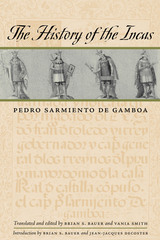 The History of the Incas
By Pedro Sarmiento de Gamboa
University of Texas Press, 2007 The History of the Incas may be the best description of Inca life and mythology to survive Spanish colonization of Peru. Pedro Sarmiento de Gamboa, a well-educated sea captain and cosmographer of the viceroyalty, wrote the document in Cuzco, the capital of the Inca Empire, just forty years after the arrival of the first Spaniards. The royal sponsorship of the work guaranteed Sarmiento direct access to the highest Spanish officials in Cuzco. It allowed him to summon influential Incas, especially those who had witnessed the fall of the Empire. Sarmiento also traveled widely and interviewed numerous local lords (curacas), as well as surviving members of the royal Inca families. Once completed, in an unprecedented effort to establish the authenticity of the work, Sarmiento's manuscript was read, chapter by chapter, to forty-two indigenous authorities for commentary and correction. The scholars behind this new edition (the first to be published in English since 1907) went to similarly great lengths in pursuit of accuracy. Translators Brian Bauer and Vania Smith used an early transcript and, in some instances, the original document to create the text. Bauer and Jean-Jacques Decoster's introduction lays bare the biases Sarmiento incorporated into his writing. It also theorizes what sources, in addition to his extensive interviews, Sarmiento relied upon to produce his history. Finally, more than sixty new illustrations enliven this historically invaluable document of life in the ancient Andes.
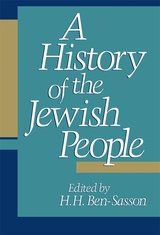 A History of the Jewish People
Hayim Ben-Sasson
Harvard University Press A History of the Jewish People presents a total vision of Jewish experiences and achievements—religious, political, social, and economic—in both the land of Israel and the diaspora throughout the ages. It has been acclaimed as the most comprehensive and penetrating work yet to have appeared in its field.
Six distinguished scholars at the Hebrew University, Jerusalem, have set forth here for the first time the authentic story of the Jewish past that is relevant to the Jewish present. Special attention is paid to the significant historical sources that have come to light in the past decades, to the findings of archaeological research, and to source materials in Jewish studies such as Talmudic literature—sources that have too often been ignored by historians. Yet, while bringing immense scholarship to the task of writing this book, the authors do not lose sight of the essential drama of Jewish history. Their style is forceful and lucid, their narrative both lively and complete.
 History of the Kingdom of Naples
Benedetto Croce
University of Chicago Press, 1970 Prolific twentieth-century Italian intellectual gives an account of his native southern Italy. In The History of the Kingdom of Naples, Benedetto Croce returns to his beloved city of Naples, combining empathy with historical detachment as he provides an account of the region. He offers an eloquent explanation of longstanding contrasts within southern Italy, which boasts both a rich cultural life and a pervasive lethargy, and he addresses controversy and scrutiny directed at southern Italy since World War II. Through a careful study of the Kingdom of Naples, Croce reveals how philosophy and history both play a part in shaping an expanded sense of Italy, and he calls for an embrace of Italy’s ever-evolving progress in contemporary politics. Among historical philosophers Croce ranks as the outstanding representative of the twentieth-century idealist school. German influences played the greatest part in his education, along with the philosophical tradition of his beloved city of Naples. A private scholar throughout his life as well as a leading statesman just before and immediately after the Fascist regime, he remained confident in his chosen role as the thinker who would “deprovincialize” Italian intellectual life and bring it into the mainstream of European thought. His work serves as a significant contribution to Italian formal history and thought, and this volume is considered to be one of the finest examples of his historiography.
 The History of the Kings of Britain: The First Variant Version
David W. Burchmore
Harvard University Press, 2019 Geoffrey of Monmouth’s History of the Kings of Britain—the earliest work to detail the legendary foundation of Britain by Brutus the Trojan and the life of King Arthur—was among the most widely read books throughout the Middle Ages. Its sweeping account of the Britons began long before the Romans and challenged the leading histories of the twelfth century. Merlin, Guinevere, Mordred, Yvain, Gawain, and other popular Arthurian figures first come to life in Geoffrey’s chronicle. It was the ultimate source of tales retold in Malory’s Morte d’Arthur, Shakespeare’s Cymbeline and King Lear, and Tennyson’s Idylls of the King.
The History survives in hundreds of manuscripts in Geoffrey’s standard text. This volume presents the first English translation of what may have been his source, the anonymous First Variant Version. This shorter and less polished Latin version of the History is attested in just a handful of manuscripts. It belonged to and was probably written by Archdeacon Walter of Oxford, who died in 1151.
History of the Lincoln County War
Maurice G. Fulton
University of Arizona Press, 1968 In the annals of western history, the Lincoln County War stands out as a complex and tragic event in which lives were lost, fortunes destroyed, and peaceful citizens transformed into lonely, exiled outlaws. A classic reference work on the era of Billy the Kid, this fast-moving account brings new meaning to the war and to those individuals who became its victims.
A History of the Lowell Institute School, 1903-1928
Charles Francis Park
Harvard University Press On October 2nd 1903, the Lowell Institute of Boston opened an evening school for giving instruction in the principles of applied science to men who were working at their trade and had not had an opportunity to attend college or a technological institution. For over twenty-five years the School has gone on, until now it is no longer an experiment but a highly valued part of the educational resources of Greater Boston. Its story is here told for the benefit of its friends as well as for the information of educators in all parts of the country who are interested in the extension of educational opportunities to the adult public. Of particular interest are the chapters dealing with students’ experiences and recollections, the positions obtained by graduates, the details of various courses, and the present status of the School.
History of the Malay Kingdom of Patani: Mis Sea#68
Ibrahim Syukri
Ohio University Press, 1985 This translation of Ibrahim Syukri’s Sejarah Kerajaan Melayu Patani (SKMP) makes available a little known but important manuscript published privately ca. 1950 and printed in jawi (Malay written in a modified Arabic script). Shortly after its publication, the book was banned in both Thailand and Malaysia. It appears that a few copies of the original printing survived.
The SKMP represents a valuable contribution to the limited literature available on the Malay population of present-day southern Thailand. While the account of Patani’s history is based on a distinctively Malay interpretation of the record, the SKMP is more important as a political statement of the strong sense of ethnic identity shared by Patani’s Malay population. The SKMP will be of particular interest to those seeking to understand the persistence of conflict in southern Thailand.
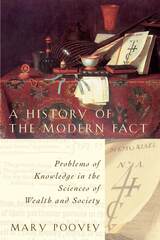 A History of the Modern Fact: Problems of Knowledge in the Sciences of Wealth and Society
Mary Poovey
University of Chicago Press, 1998 How did the fact become modernity's most favored unit of knowledge? How did description come to seem separable from theory in the precursors of economics and the social sciences?
Mary Poovey explores these questions in A History of the Modern Fact, ranging across an astonishing array of texts and ideas from the publication of the first British manual on double-entry bookkeeping in 1588 to the institutionalization of statistics in the 1830s. She shows how the production of systematic knowledge from descriptions of observed particulars influenced government, how numerical representation became the privileged vehicle for generating useful facts, and how belief—whether figured as credit, credibility, or credulity—remained essential to the production of knowledge.
Illuminating the epistemological conditions that have made modern social and economic knowledge possible, A History of the Modern Fact provides important contributions to the history of political thought, economics, science, and philosophy, as well as to literary and cultural criticism.
History of the Mosaic Templars of America: Its Founders and Officials
A.E. Bush
University of Arkansas Press, 2008 Originally published in 1924 and long out of print, this book tells the story of the Mosaic Templars of America (MTA), a famous black fraternal organization that was founded by two former slaves in Little Rock, Arkansas, in the late-nineteenth century. The organization originally provided illness, death, and burial insurance during an era of segregation when few basic services were available to black people. By 1900 Mosaic Templars’ industries grew to include an insurance company, a building and loan association, a publishing company, a business college, a nursing school, and a hospital.
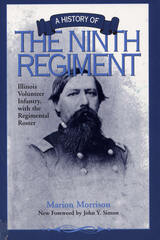 A History of the Ninth Regiment: Illinois Volunteer Infantry, with the Regimental Roster
Marion Morrison. Foreword by John Y. Simon
Southern Illinois University Press, 1997 When the Civil War erupted in April 1861, many German immigrants in Illinois rushed to enlist in the Union Army. Volunteers from Illinois towns in St. Clair County—Belleville, Millstadt, Mascoutah, Lebanon, and others—marched to Springfield under the command of August Mersy, a veteran of the failed 1848 revolt in Baden, Germany. Marion Morrison notes that when the German immigrants reached Springfield, August Mersy was rejected as commander because of his limited facility with English. Replaced by Colonel Eleazer A. Paine, an Ohioan and West Point graduate, Lieutenant Colonel Mersy fell to second in command of the Ninth Illinois Infantry Volunteers. Within a few months, however, Paine received a promotion to general that left Mersy in charge of the "Bloody Ninth." Once Grant began his Tennessee River campaign, the Ninth found itself in the thick of battle, bearing the brunt of the Confederate attempt at Fort Donelson to break Grant’s siege lines. Less than two months later, the Ninth shored up sagging Union lines after the surprise Confederate attack at Shiloh Church, retreating only when their ammunition was gone. Morrison’s account of the "Bloody Ninth" is one of the few histories written during the war.
A History of the Old Icelandic Commonwealth: Islendinga Saga
Jon Johannesson
University of Manitoba Press, 2007 The founding of the Old Icelandic Commonwealth in 930 A.D. is one of the most significant events in the history of early Western Europe. This pioneering work of historiography provides a comprehensive history of Iceland from 870 A.D. to the end of the Commonwealth in 1262.
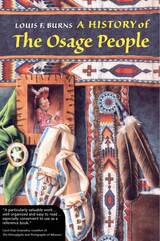 A History of the Osage People
Louis F. Burns
University of Alabama Press, 2004 Four centuries. One people. A legacy that shaped a nation. Osage traditional lands are located in mid-continental America encompassed by the present-day states of Arkansas, Missouri, Kansas, and Oklahoma. Major waterways through these lands and the defensible terrain of the Ozark range provided the tribe a distinct advantage in prehistoric and early historic times. A warlike people, the Osage long encroached on neighboring tribal lands, especially those of the Caddo to the southwest. Yet good natural boundaries and centuries of success in warfare afforded the tribe little advantage in attempts to forestall Euro-American westward expansion. Three major routes to the West—the Missouri and Arkansas Rivers and the Continental Trail—crossed Osage land, so conflict with the newcomers was inevitable. Louis Burns draws on ancestral oral traditions and research in a broad body of literature to tell the story of the Osage people. He writes clearly and concisely, from the Osage perspective. First published in 1989 and for many years out of print, this revised edition is augmented by a new preface and maps. Because of its masterful compilation and synthesis of the known data, A History of the Osage People continues to be the best reference for information on an important American Indian people.
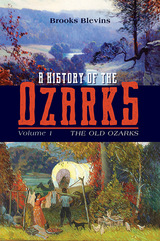 A History of the Ozarks, Volume 1: The Old Ozarks
Brooks Blevins
University of Illinois Press, 2020 Winner of the Missouri History Book Award, from the State Historical Society of Missouri
Winner of the Arkansiana Award, from the Arkansas Library Association
Geologic forces raised the Ozarks. Myth enshrouds these hills. Human beings shaped them and were shaped by them. The Ozarks reflect the epic tableau of the American people—the native Osage and would-be colonial conquerors, the determined settlers and on-the-make speculators, the endless labors of hardscrabble farmers and capitalism of visionary entrepreneurs. The Old Ozarks is the first volume of a monumental three-part history of the region and its inhabitants. Brooks Blevins begins in deep prehistory, charting how these highlands of granite, dolomite, and limestone came to exist. From there he turns to the political and economic motivations behind the eagerness of many peoples to possess the Ozarks. Blevins places these early proto-Ozarkers within the context of larger American history and the economic, social, and political forces that drove it forward. But he also tells the varied and colorful human stories that fill the region's storied past—and contribute to the powerful myths and misunderstandings that even today distort our views of the Ozarks' places and people. A sweeping history in the grand tradition, A History of the Ozarks, Volume 1: The Old Ozarks is essential reading for anyone who cares about the highland heart of America.
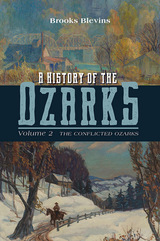 A History of the Ozarks, Volume 2: The Conflicted Ozarks
Brooks Blevins
University of Illinois Press, 2019 The Ozarks of the mid-1800s was a land of divisions. The uplands and its people inhabited a geographic and cultural borderland straddling Midwest and west, North and South, frontier and civilization, and secessionist and Unionist. As civil war raged across the region, neighbor turned against neighbor, unleashing a generation of animus and violence that lasted long after 1865. The second volume of Brooks Blevins's history begins with the region's distinctive relationship to slavery. Largely unsuitable for plantation farming, the Ozarks used enslaved persons on a smaller scale or, in some places, not at all. Blevins moves on to the devastating Civil War years where the dehumanizing, personal nature of Ozark conflict was made uglier by the predations of marching armies and criminal gangs. Blending personal stories with a wide narrative scope, he examines how civilians and soldiers alike experienced the war, from brutal partisan warfare to ill-advised refugee policies to women's struggles to safeguard farms and stay alive in an atmosphere of constant danger. The war stunted the region's growth, delaying the development of Ozarks society and the processes of physical, economic, and social reconstruction. More and more, striving uplanders dedicated to modernization fought an image of the Ozarks as a land of mountaineers and hillbillies hostile to the idea of progress. Yet the dawn of the twentieth century saw the uplands emerge as an increasingly uniform culture forged, for better and worse, in the tumult of a conflicted era.
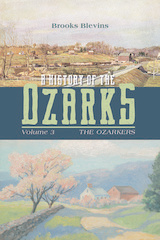 A History of the Ozarks, Volume 3: The Ozarkers
Brooks Blevins
University of Illinois Press, 2021 Between the world wars, America embraced an image of the Ozarks as a remote land of hills and hollers. The popular imagination stereotyped Ozarkers as ridge runners, hillbillies, and pioneers—a cast of colorful throwbacks hostile to change. But the real Ozarks reflected a more complex reality. Brooks Blevins tells the cultural history of the Ozarks as a regional variation of an American story. As he shows, the experiences of the Ozarkers have not diverged from the currents of mainstream life as sharply or consistently as the mythmakers would have it. If much of the region seemed to trail behind by a generation, the time lag was rooted more in poverty and geographic barriers than a conscious rejection of the modern world and its progressive spirit. In fact, the minority who clung to the old days seemed exotic largely because their anachronistic ways clashed against the backdrop of the evolving region around them. Blevins explores how these people’s disproportionate influence affected the creation of the idea of the Ozarks, and reveals the truer idea that exists at the intersection of myth and reality. The conclusion to the acclaimed trilogy, The History of the Ozarks, Volume 3: The Ozarkers offers an authoritative appraisal of the modern Ozarks and its people.
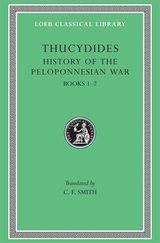 History of the Peloponnesian War, Volume I: Books 1–2
Thucydides
Harvard University Press, 1919 Classic political realism.
Thucydides of Athens was born about 471 BC. He saw the rise of Athens to greatness under the inspired leadership of Pericles. In 430, the second year of the Peloponnesian War, he caught and survived the horrible plague that he described so graphically. Later, as general in 423 he failed to save Amphipolis from the enemy and was disgraced. He tells us about this, not in volumes of self-justification, but in one sentence of his history of the war—that it befell him to be an exile for twenty years. He then lived probably on his property in Thrace, but was able to observe both sides in certain campaigns of the war, and returned to Athens after her defeat in 404. He had been composing his famous history, with its hopes and horrors, triumphs and disasters, in full detail from first-hand knowledge, along with the accounts of others.
The war was really three conflicts with one uncertain peace after the first; and Thucydides had not unified them into one account when death came sometime before 396. His history of the first conflict, 431–421, was nearly complete; Thucydides was still at work on this when the war spread to Sicily and into a conflict (415–413) likewise complete in his awful and brilliant record, though not fitted into the whole. His story of the final conflict of 413–404 breaks off (in the middle of a sentence) when dealing with the year 411. So his work was left unfinished and as a whole unrevised. Yet in brilliance of description and depth of insight this history has no superior.
The Loeb Classical Library edition of Thucydides is in four volumes.
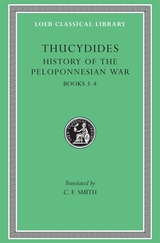 History of the Peloponnesian War, Volume II: Books 3–4
Thucydides
Harvard University Press, 1991 Classic political realism.
Thucydides of Athens was born about 471 BC. He saw the rise of Athens to greatness under the inspired leadership of Pericles. In 430, the second year of the Peloponnesian War, he caught and survived the horrible plague that he described so graphically. Later, as general in 423 he failed to save Amphipolis from the enemy and was disgraced. He tells us about this, not in volumes of self-justification, but in one sentence of his history of the war—that it befell him to be an exile for twenty years. He then lived probably on his property in Thrace, but was able to observe both sides in certain campaigns of the war, and returned to Athens after her defeat in 404. He had been composing his famous history, with its hopes and horrors, triumphs and disasters, in full detail from first-hand knowledge, along with the accounts of others.
The war was really three conflicts with one uncertain peace after the first; and Thucydides had not unified them into one account when death came sometime before 396. His history of the first conflict, 431–421, was nearly complete; Thucydides was still at work on this when the war spread to Sicily and into a conflict (415–413) likewise complete in his awful and brilliant record, though not fitted into the whole. His story of the final conflict of 413–404 breaks off (in the middle of a sentence) when dealing with the year 411. So his work was left unfinished and as a whole unrevised. Yet in brilliance of description and depth of insight this history has no superior.
The Loeb Classical Library edition of Thucydides is in four volumes.
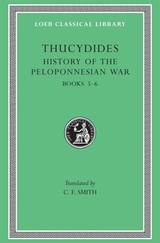 History of the Peloponnesian War, Volume III: Books 5–6
Thucydides
Harvard University Press, 1991 Classic political realism.
Thucydides of Athens was born about 471 BC. He saw the rise of Athens to greatness under the inspired leadership of Pericles. In 430, the second year of the Peloponnesian War, he caught and survived the horrible plague that he described so graphically. Later, as general in 423 he failed to save Amphipolis from the enemy and was disgraced. He tells us about this, not in volumes of self-justification, but in one sentence of his history of the war—that it befell him to be an exile for twenty years. He then lived probably on his property in Thrace, but was able to observe both sides in certain campaigns of the war, and returned to Athens after her defeat in 404. He had been composing his famous history, with its hopes and horrors, triumphs and disasters, in full detail from first-hand knowledge, along with the accounts of others.
The war was really three conflicts with one uncertain peace after the first; and Thucydides had not unified them into one account when death came sometime before 396. His history of the first conflict, 431–421, was nearly complete; Thucydides was still at work on this when the war spread to Sicily and into a conflict (415–413) likewise complete in his awful and brilliant record, though not fitted into the whole. His story of the final conflict of 413–404 breaks off (in the middle of a sentence) when dealing with the year 411. So his work was left unfinished and as a whole unrevised. Yet in brilliance of description and depth of insight this history has no superior.
The Loeb Classical Library edition of Thucydides is in four volumes.
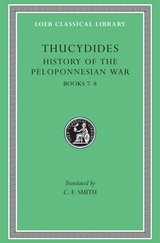 History of the Peloponnesian War, Volume IV: Books 7–8
Thucydides
Harvard University Press, 1991 Classic political realism.
Thucydides of Athens was born about 471 BC. He saw the rise of Athens to greatness under the inspired leadership of Pericles. In 430, the second year of the Peloponnesian War, he caught and survived the horrible plague that he described so graphically. Later, as general in 423 he failed to save Amphipolis from the enemy and was disgraced. He tells us about this, not in volumes of self-justification, but in one sentence of his history of the war—that it befell him to be an exile for twenty years. He then lived probably on his property in Thrace, but was able to observe both sides in certain campaigns of the war, and returned to Athens after her defeat in 404. He had been composing his famous history, with its hopes and horrors, triumphs and disasters, in full detail from first-hand knowledge, along with the accounts of others.
The war was really three conflicts with one uncertain peace after the first; and Thucydides had not unified them into one account when death came sometime before 396. His history of the first conflict, 431–421, was nearly complete; Thucydides was still at work on this when the war spread to Sicily and into a conflict (415–413) likewise complete in his awful and brilliant record, though not fitted into the whole. His story of the final conflict of 413–404 breaks off (in the middle of a sentence) when dealing with the year 411. So his work was left unfinished and as a whole unrevised. Yet in brilliance of description and depth of insight this history has no superior.
The Loeb Classical Library edition of Thucydides is in four volumes.
 A History of the People’s Action Party, 1985-2021
Shashi Jayakumar
National University of Singapore Press, 2020 The People's Action Party (PAP) of Singapore is among the longest-ruling democratically-elected political parties in the world, in power continuously since Singapore gained self-rule in 1959. Such longevity is the product of an institution that is itself dynamic and responsive. But remarkably, the story of the party as institution has not received the sustained study it deserves from either historians or political scientists.
This narrative history of the PAP follows the story through decisions made by party leaders as they sought to respond to the changing demands and expectations of the Singapore electorate over a thirty-year period that saw Singapore enter the ranks of developed nations. The focus is on change in four dimensions: in the communications methods and styles the party adopted, the mechanisms it developed for managing institutional change, the sometimes vexed question of party renewal, and the evolution of economic and social policy. Drawing on internal party documents and multiple interviews with key leaders over the course of a decade, this book provides a detailed portrait of a robust political institution and establishes a distinctive new narrative of Singapore politics.
History of the Persian Empire
A. T. Olmstead
University of Chicago Press, 1948 Out of a lifetime of study of the ancient Near East, Professor Olmstead has gathered previously unknown material into the story of the life, times, and thought of the Persians, told for the first time from the Persian rather than the traditional Greek point of view.
"The fullest and most reliable presentation of the history of the Persian Empire in existence."—M. Rostovtzeff
 The History of the Province of New-York
William Smith, Jr.
Harvard University Press, 1972 William Smith, Jr., (1728-1793), politician, jurist, historian, and Loyalist produced an admirable history of colonial New York that remains to this day one of the best records of early America written by a colonist. He published the first volume, covering the period 1610-1732, in 1757, and wrote the second (1732-1762) while a neutralist bystander during the Revolutionary War. Thus his History serves as an elegant testimony to the Americans' growing self-consciousness and search for identity on the eve of the Revolution.
As editor of the first accurate and complete version of this important work, Mr. Kammen has prepared a fresh first volume based upon the original edition, plus Smith's rich marginalia in his personal copy, and a second volume based upon the original manuscript. Included in this generously illustrated work is an extensive three-part introductory essay by the editor and four appendixes.
 A History of the Railroad in 100 Maps
Jeremy Black
University of Chicago Press, 2024 The first international history of railroads and railroad infrastructure told through stunningly reproduced maps. Since their origins in eighteenth-century England, railroads have spread across the globe, changing everything in their path, from where and how people grew and made things to where and how they lived and moved. Railroads rewrote not only world geography but also the history of maps and mapping. Today, the needs of train companies and their users continue to shape the maps we consume and consult. Featuring full-color maps primarily from the British Library's distinguished collection—many of them never before published—A History of the Railroad in 100 Maps is the first international history of railroads and railroad infrastructure told through maps. Jeremy Black includes examples from six continents, spanning a variety of uses from railroad planning and operations to guides for passengers, shippers, and tourists. Arranged chronologically, the maps are accompanied by explanatory text that sheds light on the political, military, and urban development histories associated with the spread of railroads. A final chapter considers railroad maps from games, books, and other cultural artifacts. For anyone interested in the history of railroads or maps, A History of the Railroad in 100 Maps will offer new and unexpected insights into their intertwined global history.
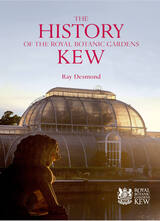 The History of the Royal Botanic Gardens Kew
Ray Desmond
Royal Botanic Gardens, Kew, 2007 This is the definitive history of the world's greatest botanic garden. Comprehensively revised, this stunning, richly illustrated reference takes in every aspect of Kew's history over two centuries - from its origin, pivotal roles in collecting, classifying and identifying the world's plants, the commercial crops it gave to the British Empire, to being a world renowned institution at the cutting edge of plant science.
Kew's heritage - the herbarium, art and architecture, from Kew Palace and Burton's great Palm House to the Princess of Wales Conservatory, state of the art laboratories and new Davies Alpine House - is illustrated and described, together with the events leading to its UNESCO World Heritage Site status in 2003. Lastly, it is a social history of the Gardens, and of the scientists, architects, designers and gardeners who have made Kew.
Detailed appendices and bibliography have been updated, and two new chapters added, bringing the book up to date as the authoritative reference work on Kew, its history and function.
 A History of the Rutgers University Glee Club
David F. Chapman
Rutgers University Press, 2022 Founded in 1872, the Glee Club is Rutgers University’s oldest continuously active student organization, as well as one of the first glee clubs in the United States. For the past 150 years, it has represented the university and presented an image of the Rutgers man on a national and international stage.
This volume offers a comprehensive history of the Rutgers Glee Club, from its origins adopting traditions from the German Männerchor and British singing clubs to its current manifestation as a world-recognized ensemble. Along the way, we meet the colorful and charismatic men who have directed the group over the years, from the popular composer and minstrel performer Loren Bragdon to the classically-trained conductor Patrick Gardner. And of course, we learn what the club has meant to the generations of talented and dedicated young men who have sung in it.
A History of the Rutgers University Glee Club recounts the origins of the group’s most beloved traditions, including the composition of the alma mater’s anthem “On the Banks of the Old Raritan” and the development of the annual Christmas in Carol and Song concerts. Meticulously researched, including a complete discography of the club’s recordings, this book is a must-have for all the Rutgers Glee Club’s many fans and alumni.
 A History of the Second World War in 100 Maps
Jeremy Black
University of Chicago Press, 2020
The First World War was marked by an exceptional expansion in the use and production of military cartography. But World War II took things even further, employing maps, charts, reconnaissance, and the systematic recording and processing of geographical and topographical information on an unprecedented scale. As Jeremy Black—one of the world’s leading military and cartographic historians—convincingly shows in this lavish full-color book, it is impossible to understand the events and outcomes of the Second World War without deep reference to mapping at all levels. In World War II, maps themselves became the weapons.
A History of the Second World War in 100 Maps traces how military cartography developed from simply recording and reflecting history to having a decisive impact on events of a global scale. Drawing on one hundred key maps from the unparalleled collections of the British Library and other sources—many of which have never been published in book form before--Jeremy Black takes us from the prewar mapping programs undertaken by both Germany and the United Kingdom in the mid-1930s through the conflict’s end a decade later. Black shows how the development of maps led directly to the planning of the complex and fluid maneuvers that defined the European theater in World War II: for example, aerial reconnaissance photography allowed for the charting of beach gradients and ocean depths in the runup to the D-Day landings, and the subsequent troop movements at Normandy would have been impossible without the help of situation maps and photos. In the course of the conflict, both in Europe and the Pacific, the realities of climate, terrain, and logistics—recorded on maps—overcame the Axis powers. Maps also became propaganda tools as the pages of Time outlined the directions of the campaigns and the Allies dropped maps from their aircraft.
In this thrilling and unique book, Jeremy Black blends his singular cartographic and military expertise into a captivating overview of World War II from the air, sea, and sky, making clear how fundamental maps were to every aspect of this unforgettable global conflict.
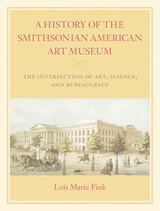 A History of the Smithsonian American Art Museum: The Intersection of Art, Science, and Bureaucracy
Lois Marie Fink
University of Massachusetts Press, 2007 Dedicated to the art of the United States, the Smithsonian American Art Museum contains works by more than 7,000 artists and is widely regarded as an invaluable resource for the study and preservation of the nation's cultural heritage. But as Lois Marie Fink shows in this probing narrative, the history of the museum is hardly one of steady progress. Instead, it reads like a nineteenth-century melodrama, replete with villains and heroes, destruction by fire, dashed hopes, and periods of subsistence survival—all leading eventually to a happy ending. Originating as the art gallery stipulated in the 1846 founding legislation of the Smithsonian, the museum developed within an institution that was essentially controlled by scientists. In its early years, the museum's holdings included a diverse selection of art and artifacts, mostly donated from private collections. Government support varied in response to shifting attitudes of officials and the public toward American art, ranging from avid admiration at the turn of the twentieth century to a tepid response and an almost total withdrawal of funding a generation later in favor of European masterworks. For decades the museum followed scientific organizational principles in exhibitions and collection strategies. Far into the twentieth century, accessions remained tied to nineteenth-century figurative art, reflecting the strength and influence of anthropology and biological sciences at the Smithsonian. A key breakthrough for modern art came in 1964 with the appointment of Smithsonian secretary Dillon Ripley, a scientist who strongly promoted the art side of the institution. With renewed support for expanding the collection and programs, the museum moved in 1968 to its present location in the Patent Office Building. In recounting the history of the museum from 1846 to 1980, Fink unravels the various levels of institutional authority, power, governance, and bureaucracy and shows how people at each level influenced the fortunes of the collection. She also places changing concepts of art and museum practice in the context of national ideals and Washington realities.
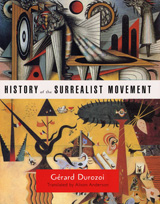 History of the Surrealist Movement
Gérard Durozoi
University of Chicago Press, 2002 "With its unprecedented depth and range, this massive new history of Surrealism from veteran French philosopher and art critic Durozoi will be the one-volume standard for years to come. . . . The book discusses expertly the main surrealist artists like Jean Arp, Max Ernst, René Magritte, Yves Tanguy, Salvador Dalí and Joan Miró, but also treats with considerable understanding the surrealist writing by Louis Aragon, Paul Eluard, Robert Desnos, Julien Graçq and, of course, the so-called 'Pope of Surrealism,' André Breton. . . . This book should turn up in all serious collections on 20th century art."—Publishers Weekly, starred review
From Dada to the Automatists, and from Max Ernst to André Breton, Gérard Durozoi here provides the most comprehensive history of the Surrealist movement. Tracing the movement from its origins in the 1920s to its decline in the 1950s and 1960s, Durozoi tells the history of Surrealism through its activities, publications, and reviews, demonstrating its close ties to some of the most explosive political, as well as creative, debates of the twentieth century.
Drawing on a staggering amount of documentary and visual evidence—including 1,000 photos—Durozoi illuminates all the intellectual and artistic facets of the movement, from literature and philosophy to painting, photography, and film, thus making History of the Surrealist Movement its definitive encyclopedia.
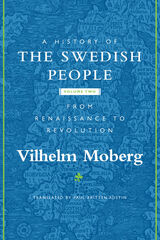 A History of the Swedish People: Volume II: From Renaissance to Revolution
Vilhelm Moberg
University of Minnesota Press, 2005 In the second volume of his vivid history of the Swedes, Vilhelm Moberg brings his focus on the common people to bear on a period that included two dramatic revolts: the national insurrection under Engelbrekt and the last desperate attempt of the Smaland peasantry to retain their medieval liberties - a defiance bloodily crushed by King Gustav Vasa. Using a wide variety of local historical source materials, Moberg studies the ruthless monarch Vasa and his two tragic opponents: the psychopathic Christian II of Denmark and Nils Dracke, the leader of the Smalanders. Furthermore, he examines the enigmatic and wide appeal of the Swedish forest and investigates the origins of the Swedish hatred of Danes, which was implanted by propaganda through songs commissioned by Karl VIII's chancellery.Moberg's history has been widely hailed by the Swedish press as a masterpiece of popular history writing and has been an all-time best-seller in Swedish bookstores.
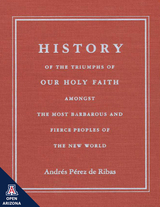 History of the Triumphs of Our Holy Faith amongst the Most Barbarous and Fierce Peoples of the New World
Andrés Pérez de Ribas; Translated by Daniel T. Reff, Maureen Ahern, and Richard K. Danford; Annotated and with a Critical Introduction by Daniel T. Reff
University of Arizona Press, 1999 Considered by historian Herbert E. Bolton to be one of the greatest books ever written in the West, Andrés Pérez de Ribas's history of the Jesuit missions provides unusual insight into Spanish and Indian relations during the colonial period in Northern New Spain. First published in Madrid in 1645, it traces the history of the missions from 1591 to 1643 and includes letters from Jesuit annual reports and other correspondence, much of which has never been found or cataloged in historical archives. Daniel T. Reff, Maureen Ahern, and Richard K. Danford have now prepared the first complete, scholarly, and fully annotated edition of this important work in English.
Pérez de Ribas was the first permanent missionary to the Ahome, Zuaque, and Yaqui Indians. After fifteen years on the mission frontier he was recalled to Mexico City, where he held various posts, including Jesuit Provincial. Addressed to novitiates ignorant of the challenges they would face in the field, his Historia was a virtual textbook on missionary work in the New World. Also written to encourage ongoing support of the Jesuit missions, it reflected the author's deep grasp of what rhetorically soothed and moved Church and Crown officials.
Perhaps of greatest interest to the modern reader are Pérez de Ribas's often detailed comments on indigenous beliefs and practices. These firsthand observations provide a rich resource of ethnographic and historical data concerning everything from native subsistence, settlement patterns, and myths to the dynamics of Jesuit-Indian relations. The many cases of conversion that Pérez de Ribas describes are especially rich in ethnographic data, clarifying the values and beliefs from which the Indians were "rescued."
History of the Triumphs is a primary document of great importance, made more valuable here by an exceptionally fluid translation and painstaking annotations. It will be a standard reference for all engaged in research on New Spain and a captivating read for anyone interested in this chapter of American history.
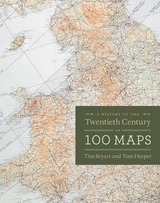 A History of the Twentieth Century in 100 Maps
Tim Bryars and Tom Harper
University of Chicago Press, 2014 The twentieth century was a golden age of mapmaking, an era of cartographic boom. Maps proliferated and permeated almost every aspect of daily life, not only chronicling geography and history but also charting and conveying myriad political and social agendas. Here Tim Bryars and Tom Harper select one hundred maps from the millions printed, drawn, or otherwise constructed during the twentieth century and recount through them a narrative of the century’s key events and developments.
As Bryars and Harper reveal, maps make ideal narrators, and the maps in this book tell the story of the 1900s—which saw two world wars, the Great Depression, the Swinging Sixties, the Cold War, feminism, leisure, and the Internet. Several of the maps have already gained recognition for their historical significance—for example, Harry Beck’s iconic London Underground map—but the majority of maps on these pages have rarely, if ever, been seen in print since they first appeared. There are maps that were printed on handkerchiefs and on the endpapers of books; maps that were used in advertising or propaganda; maps that were strictly official and those that were entirely commercial; maps that were printed by the thousand, and highly specialist maps issued in editions of just a few dozen; maps that were envisaged as permanent keepsakes of major events, and maps that were relevant for a matter of hours or days.
As much a pleasure to view as it is to read, A History of the Twentieth Century in 100 Maps celebrates the visual variety of twentieth century maps and the hilarious, shocking, or poignant narratives of the individuals and institutions caught up in their production and use.
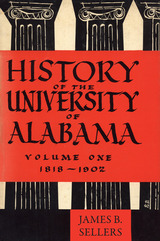 History of the University of Alabama: Volume One, 1818-1902
James Benson Sellers
University of Alabama Press, 1953 The University of Alabama, established in 1831, has survived poverty, riots, political interference, wartime destruction, attacks by clergy and laymen, and internal feuds to develop from a boarding school for planters’ sons to a modern and thriving state university. Using official records and state newspapers as well as letters and diaries of presidents, students, teachers, and alumni, this comprehensive volume that covers 1818 to 1902 reveals the hardships and achievements of the men and women who made the university during its early years. The History of the University of Alabama, first published in 1953, details the educational progress in spite of meager funds, primitive buildings and equipment, unruly students, and interruption by the Civil War. Interwoven with the accounts of campus life, extracurricular activities, early intercollegiate athletics, and building programs is the history of a long-sustained effort by many devoted presidents, faculty, and citizens to raise educational standards and to improve the instruction provided for the youth of the state.
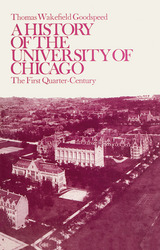 A History of the University of Chicago, Founded by John D. Rockefeller: The First Quarter-Century
Thomas Wakefield Goodspeed
University of Chicago Press, 1973 The initial steps which led to the founding of the great educational institutions of the world are known in very few instances. Seldom was any record even made of them, their significance not being recognized when the events occurred. The author of this work, Thomas Wakefield Goodspeed, was intimately connected with the persons and events involved in the founding of the University of Chicago in 1891. His detailed account of that institution's first twenty-five years, originally published in 1916, reveals that the chief participants were aware from the beginning of the magnitude and importance of their enterprise.
As Goodspeed shows, once the main roles were cast—in the persons of John D. Rockefeller and William Rainey Harper—the University of Chicago was irrevocably headed for greatness. Without the support of both of these men it would never have become one of the nation's major universities in a mere quarter century. Although Harper died in 1906, his innovative mind and unflagging energy left an indelible mark on the university during the fifteen years of his presidency. The study provides detailed information on the founding of the university, the procurement of funds, the recruitment of faculty, the construction of buildings, student life, and the problems of continuing growth.
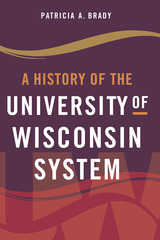 A History of the University of Wisconsin System
Patricia A. Brady
University of Wisconsin Press, 2020 A tumultuous 1971 merger that combined all of the state’s public colleges and universities into a single entity led to the creation of the University of Wisconsin System. Drawing on decades of previously unpublished sources, Patricia A. Brady details the System’s full history from its origin to the present, illuminating complex networks among and within the campuses and an evolving relationship with the state.
The UW System serves as a powerful case study for how broad, national trends in higher education take shape on the ground. Brady illustrates the ways culture wars have played out on campuses and the pressures that have mounted as universities have shifted to a student-as-consumer approach. This is the essential, unvarnished story of the unique collection of institutions that serve Wisconsin and the world—and a convincing argument for why recognizing and reinvesting in the System is critically important for the economic and civic future of the state and its citizens.
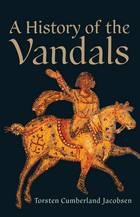 A History of the Vandals
Torsten Cumberland Jacobsen
Westholme Publishing, 2012 The First General History in English of the Germanic People Who Sacked Rome in the Fifth Century AD and Established a Kingdom in North Africa The fifth century AD was a time of great changes in the Mediterranean world. In the early 400s, the Roman Empire ranged from the lowlands of Scotland to the Upper Nile and from Portugal to the Caucasus. It was almost at its widest extent, and although ruled by two emperors—one in the West and one in the East—it was still a single empire. One hundred years later, Roman control of Western Europe and Western North Africa had been lost. In its place, a number of Germanic kingdoms had been established in these regions, with hundreds of thousands of Germanic and other peoples settling permanently inside the former borders of the Western Roman Empire. One of the most fascinating of these tribes of late antiquity were the Vandals, who over a period of six hundred years had migrated from the woodland regions of Scandinavia across Europe and ended in the deserts of North Africa. In A History of the Vandals, the first general account in English covering the entire story of the Vandals from their emergence to the end of their kingdom, historian Torsten Cumberland Jacobsen pieces together what we know about the Vandals, sifting fact from fiction. In the middle of the fifth century the Vandals, who professed Arianism, a form of Christianity considered heretical by the Roman emperor, created the first permanent Germanic successor state in the West and were one of the deciding factors in the downfall of the Western Roman Empire. Later Christian historians described their sack of Rome in 455 and their vehement persecution of Catholics in their kingdom, accounts that were sensationalized and gave birth to the term “vandalism.” In the mid-sixth century, the Vandals and their North African kingdom were the first target of Byzantine Emperor Justinian’s ambitious plan to reconquer the lost territories of the fallen Western Empire. In less than four months, what had been considered one of the strongest Germanic kingdoms had been defeated by a small Roman army led by the general Belisarius. Despite later rebellions, this was the end of the Germanic presence in North Africa, and in many ways the end of the Arian heresy of Christianity. For the Romans it was the incredibly successful start of the reconquest of the lost lands of the Western Empire.
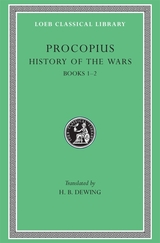 History of the Wars, Volume I: Books 1–2
Procopius
Harvard University Press Late antique military operations.
Procopius, born at Caesarea in Palestine late in the fifth century, became a lawyer. In AD 527 he was made legal adviser and secretary of Belisarius, commander against the Persians, and went with Belisarius again in 533 against the Vandals and in 535 against the Ostrogoths. Sometime after 540 he returned to Constantinople. He may have been that Procopius who was prefect of Constantinople in 562, but the date of his death (after 558) is unknown.
Procopius’ History of the Wars in 8 books recounts the Persian Wars of emperors Justinus and Justinian down to 550 (2 books); the Vandalic War and after-events in Africa 532–546 (2 books); the Gothic War against the Ostrogoths in Sicily and Italy 536–552 (3 books); and a sketch of events to 554 (1 book). The whole consists largely of military history, with much information about peoples and places as well, and about special events. He was a diligent, careful, judicious narrator of facts and developments and shows good powers of description. He is just to the empire’s enemies and boldly criticizes emperor Justinian. Other works by Procopius are the Anecdota or Secret History—vehement attacks on Justinian, Theodora, and others; and the Buildings of Justinian (down to AD 558) including roads and bridges as well as churches, forts, hospitals, and so on in various parts of the empire.
The Loeb Classical Library edition of Procopius is in seven volumes.
|
|


